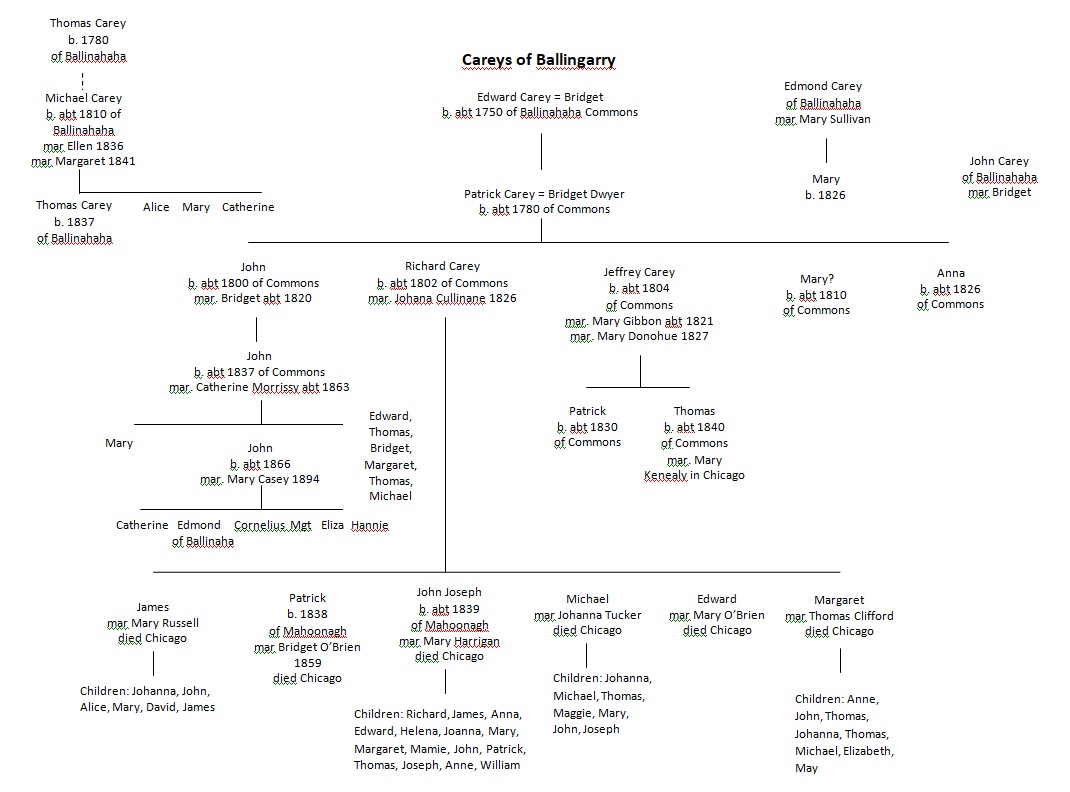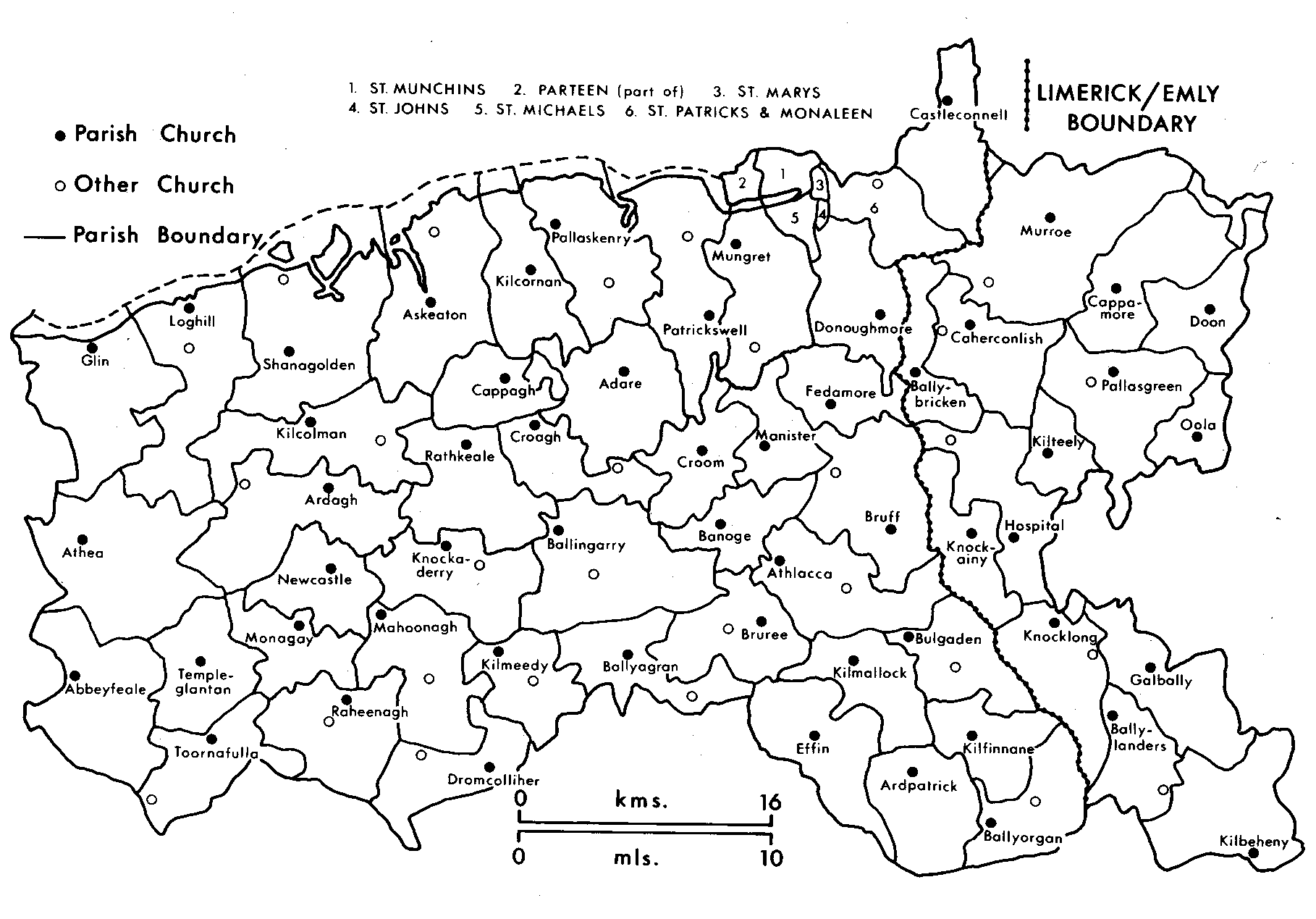
The Careys of Ballingarry
John Carey's parents were married in the parish of Mahoonagh in
County Limerick, Ireland in 1826. John's brother, Patrick was
christened in Mahoonagh in 1838. No christening record has been
found for John Carey, but the Mahoonagh parish register has gaps
in the late 1830s.

Mahoonagh is a parish in the west of County Limerick. It is
sometimes called Castlemahon. There are two main villages in the
parish, Mahoonagh and Feohanagh. Mahoonagh is an ancient Irish
name, which means "place of the tree stumps".
The first appearance of the Carey family in the Mahoonagh
occurred when Richard Carey married Johana Cullinane:
Richard Carey married Johana Cullinane on 30 January 1826 in
Mahoonagh. The witnesses to the marriage were John Cullinane and
Patrick Kiely.
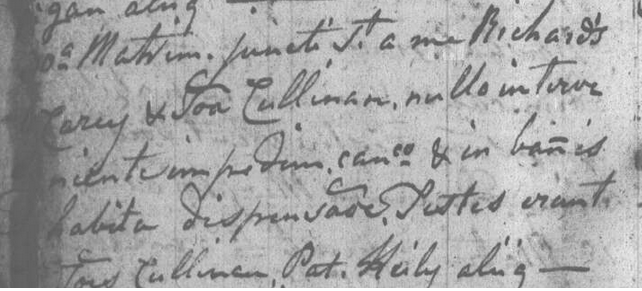
Marriage
record for Richard Carey and Johana Cullinane in Mahoonagh
Richard and Johana's son, Patrick was christened in Mahoonagh in
1838:
Patrick, son of Richard Carey and Johana Cullinane on 12 October 1838 in Mahoonagh.
Careys are shown as witnesses and sponsors in the Mahoonagh parish
register:
11 March 1814 John Carey was a witness at the marriage of
James Heligan and Margaret Connel.
7 August 1815 James Carey was a sponsor for the baptism of
Mary, daughter of Demetrius Hayes and Mary Carey.
Carey children baptized in the parish of Mahoonagh were:
Bridget, christened 25 January 1822, daughter of
Jeffrey Carey and Mary Gibbon.
Mary, christened 25 December 1824, daughter of Jeffrey
Carey and Mary Gibbon.
John, christened 3 March 1843, son of Thomas Carey and
Margaret Connors.
Mary, christened 29 March 1847, daughter of Thomas
Carey and Margaret Connors.
Honora, christened 18 September 1852, daughter of
Thomas Carey and Margaret Connors.
In Griffith's Valuation, a tax valuation of landholders, for Mahoonagh in 1851 there is only one Carey listed. Thomas Carey is found in the townland of Curragh in lot 4:
Occupier: Thomas Carey
Immediate Lessor: John Meagher
Description of tenements: House and land
Area: 3,1,30
Net annual value: 2 L., 2 s., 0 d.
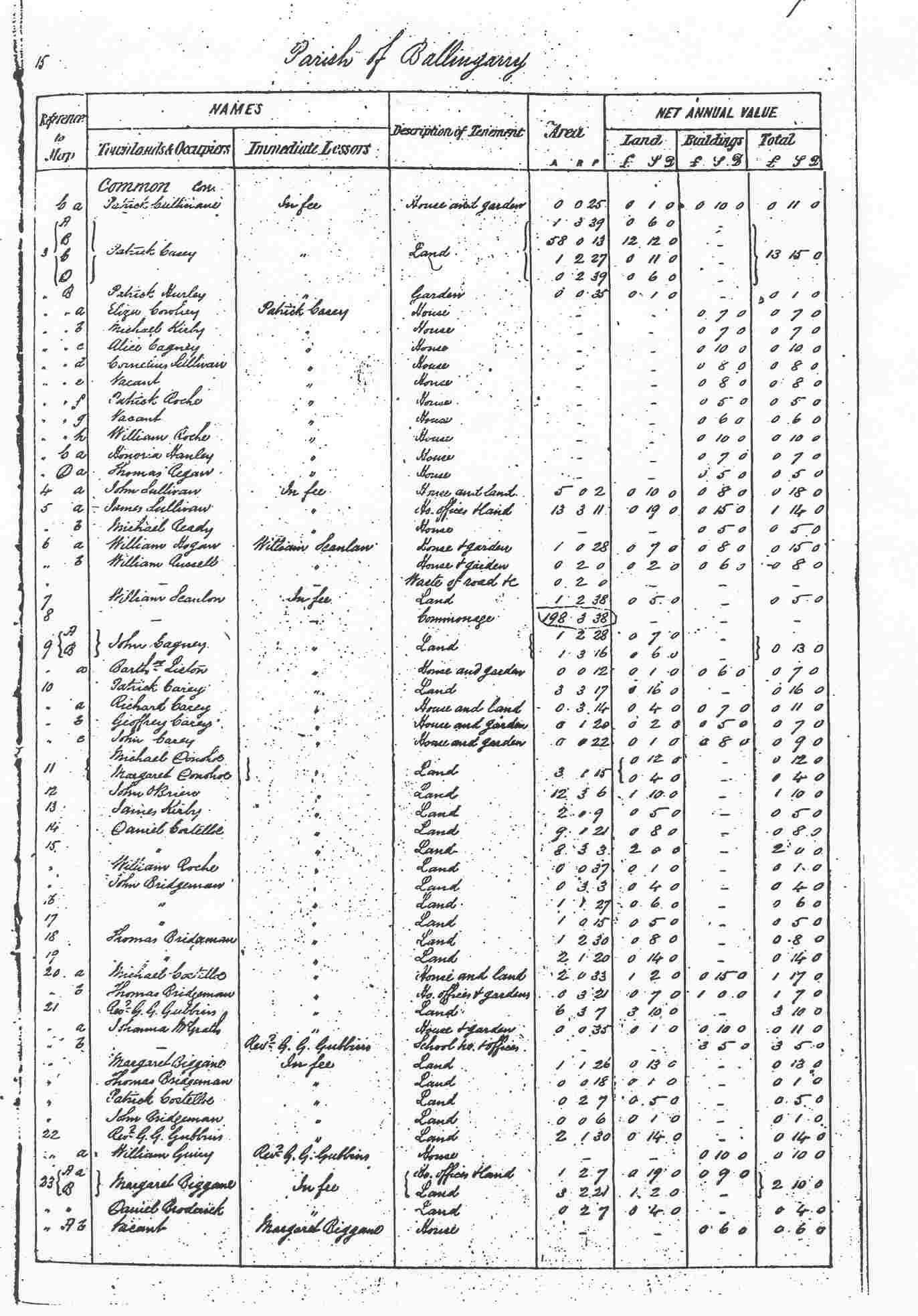
Griffith's Valuation, Common townland,
Ballingarry parish, 1852
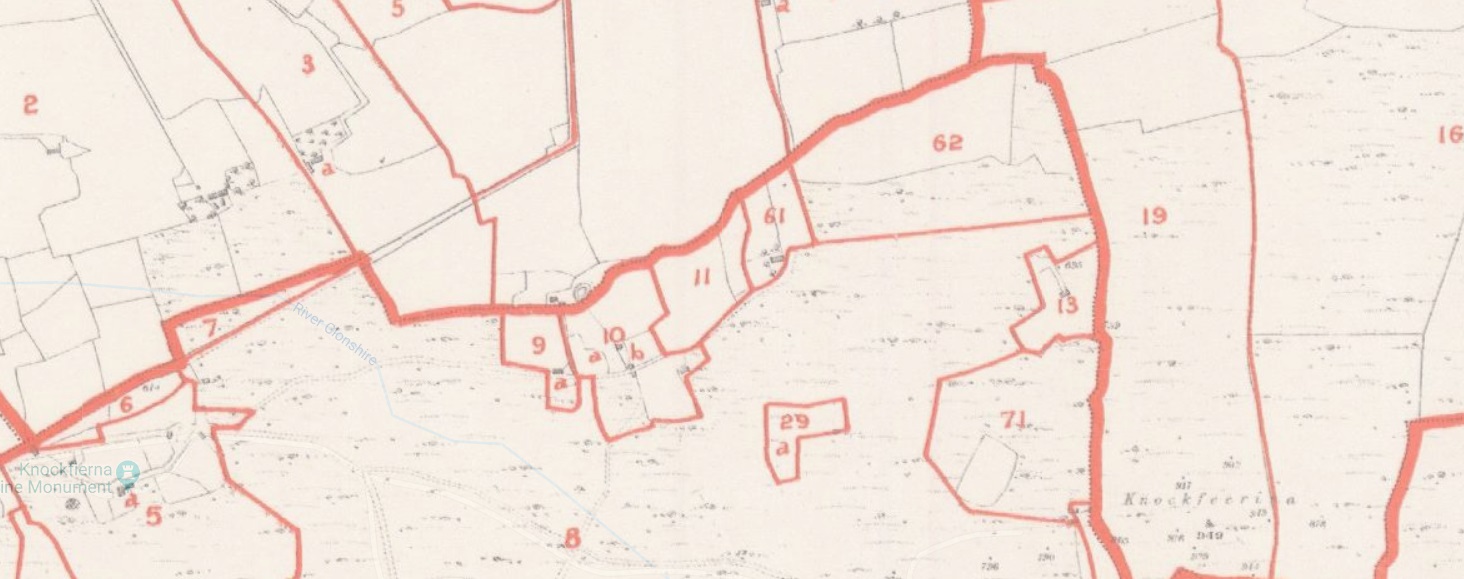
Ordinance Survey map of Commons, showing the Carey's
property at Lot 10.
This map was created at the time of Griffiths Valuation
in 1852
Richard Carey, Geoffrey Carey and John Carey are found in the
townland of Common (An Coimin) or Commons in the parish of
Ballingarry in the Griffith's Valuation of 1852. Ballingarry is
situated a few miles east of Mahoonagh. Ballingarry means the "town
of the garden". Ballingarry was a booming town in the early
1800s, and the important industries were weaving and linen. The
town's economy was badly impacted by the Famine. The countryside
around Ballingarry is dominated by the hill of Knockfierna, which
means "the hill of truth". Common had about 88 houses, a
school house, police barracks, and a commonage area of 198 acres.
Patrick Carey was also shown as having land other than a house in
the area.
Knockfierna was a site of ancient importance. The site includes the Knockfierna Giant’s Grave, the Knockfierna Cairn, the ancient Knockfierna Ogham Stone, and the Lisnafeean Fort. An ancient javelin head was found on Knockfierna. "Knockfierna Cairn, according to Lewis, was the site of the ancient temple of Stuadhraicin. The authority for this statement is not given but the heath-covered hill for about a mile west of the dome is known locally as the 'Strickeens'."
“The area is classified as heathland and dominated
by Ling, Bell Heather, Cross Leaved Heath, Bilberry, Gorse,
Cranberry, Bog Rosemary, Bracken, Rushes, Sedges, Bog Cotton,
Purple Moor Meadows, Foxtail, Fexcues, Mosses, Lichen (dozens of
species), Fern, Woodrush, Purple Orchid, Meadow Saffron and
Yellow Foxglove and the Hen Harrier. The fauna includes
butterflies, caterpillars, hawks, darter, etc."
(Knockfierna the Hill of Truth) The view from the top is
described: "Most memorable was a fine August day when my
husband and I stood on top of Knockfierna, a hill of only
950-feet and yet commanding a tremendous all-round view of wide
windy acres of rich Munster land, and beyond them the Shannon
Estuary, the Kerry hills…To know that every year it has been the
custom of our ancestors to assemble on these hills in festivity
and high spirits, to look out over the plains and pick out the
landmarks, it to understand better Irish history.” (The Festival
of Lughnasa, by Maire McNeill)
Famine house, Knockfierna
The Careys farmed the fertile ground in Ballinaha and Common at
the base of Knockfierna. The commonage area on Knockfierna was
hilly and rocky, and not good for farming. It was literally in the
Carey's backyard. Ballingarry is now the site of a park dedicated
to the famine houses – houses that were built and occupied on
commonage land by those who were evicted by ruthless landlords in
the potato famine. Many were evicted from the nearby Cox estate in
Ballynoe, a townland just south of Commons. "Knockfierna had a
lot of common ground, meaning that it was not owned by a
landlord, so many evicted families moved to the upper slopes
between 1830-1845. The hill was densely populated with over two
hundred stone cabins and a total population of over one thousand
persons. These people had plots of land, and depended on potato
crops totally so when the crop failed in consecutive years they
faced death or emigration." (Knockfierna, the
Hill of Truth)
The Limerick Reporter for May 1847 recounts events that took place in the area during the Famine: "Seven carts of flour and four loads of Indian meal from Croom were being escorted by police to Ballingarry, when 500 men and women attacked the convoy near Kilmacow. When they were told the supplies were for the Relief Committee at Ballingarry, they took only one cart-load...On the same day as the attack, 300 people from Knockfierna Hill drove off fifty cattle and only gave up when they were promised work by the curate." The famine memorial is located very near the Carey's property: "You will see pre-famine unfinished field patterns, walls and potato ridges (lazy beds). These ridges show that the last crops were never dug out because of the potato blight. A megalithic tomb is visible on the northern slope of Knockfierna and the remains of a cairn on the summit. The Mass rock is on the northern side of the pinnacle which was used during the Penal times (1700-1800).”
A local history describes Commons at the time: "Much of Cnoc
Firinne is a commonage, and in the bad times people used to come
from all parts and build Scalps (Scailpeanna) to live in. These
were very numerous during that time. The poor men did a day's
work when they got the chance. Their wages were four pence a
day. During the famine times when there was nothing to eat but
turnip leaves, one poor man died of hunger because he was too
honest to steal and too proud to beg. Stealing was very rife in
those days. Some were noted for stealing...A family named Dore,
who were powerful strong men were noted for doing things of this
kind. Flour used to be taken out in sack loads from a mill in
Limerick to some of the small towns and very often this used to
be held up near Kilmacow Cross by the Knockfierna boys and the
flour taken. This became so common that soldiers were sent to
Knockfierna to prevent such occurrences. They camped in Dan
Sheahan's field and to this day the field is called "The Camp
Field". There was also a police barrack in Knockfierna, but the
police ceased to live in it over one hundred years ago. The
Barrack is now owned by Mr. David Biggane." (Old Stories
from Knockfierna During the Famine Times; Knockfierna &
District Annual Journal, Vol 5, 1993)
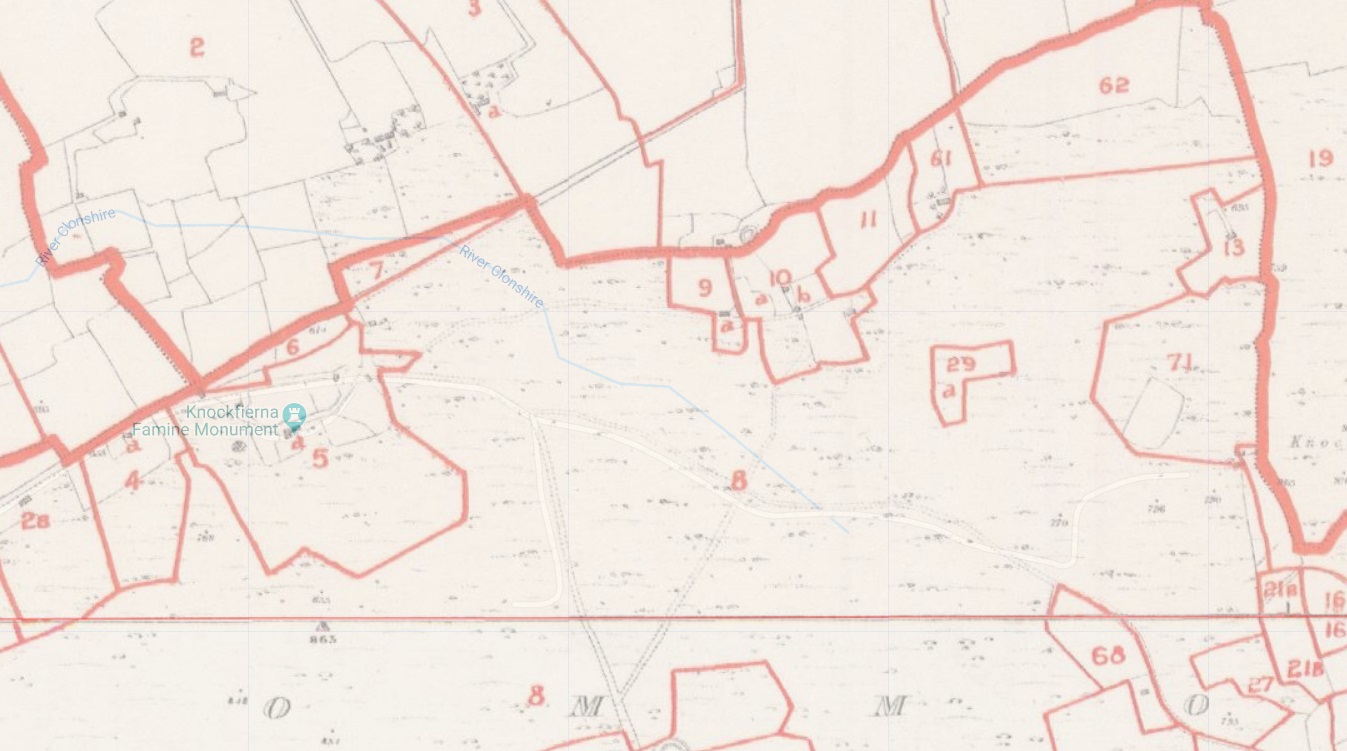
The Careys owned a small lot of land, which they subdivided. They
owned it in fee, and did not pay rent or live in the commonage
area in a famine house. They showed great resiliency to have
survived, as the area was hard-hit by the famine. Richard's house
was small - 15 1/2 feet by 21 1/2 feet, and he owned 3/4 acres of
land. This is a cottier or farm laborer's size property.
Altogether, with Richard, John, Patrick, and Jeffrey, they owned
about four acres. Richard and Jeffrey could have been working as
farm laborers in Mahoonagh in the mid-1820s, then returned home to
work the family property.
Their property in Griffiths is shown as "in fee", which means
that "real estates or freeholds of inheritance are described as
in fee". (The Archives of the Valuation of Ireland
1830-1865, Frances McGee) The property had likely been
inherited from their ancestors.
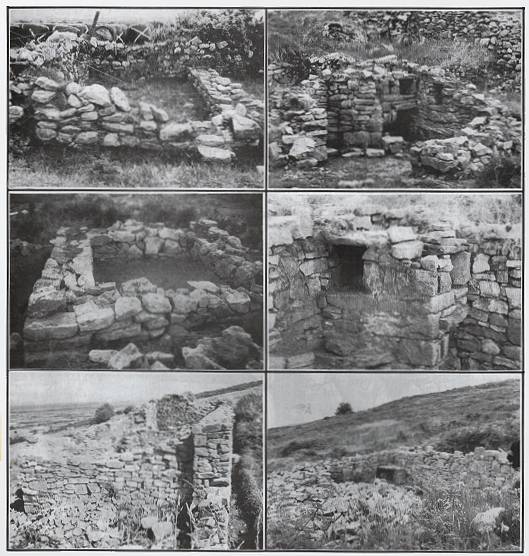
Knockfierna cottages in stages of restoration
The following facts lend support to Ballingarry as the Carey's
home:
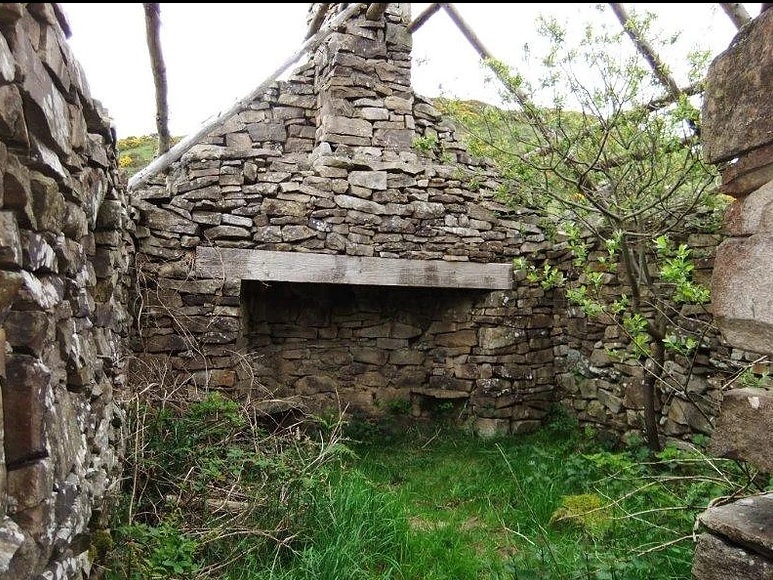
Ballynahaha
Mary Carey
Michael Carey
Thomas Carey
Bridget Carey
Ballynoe
John Carey
Durraclogh
John Carey
Castle Street, Town of Ballingarry
Geoffrey Carey
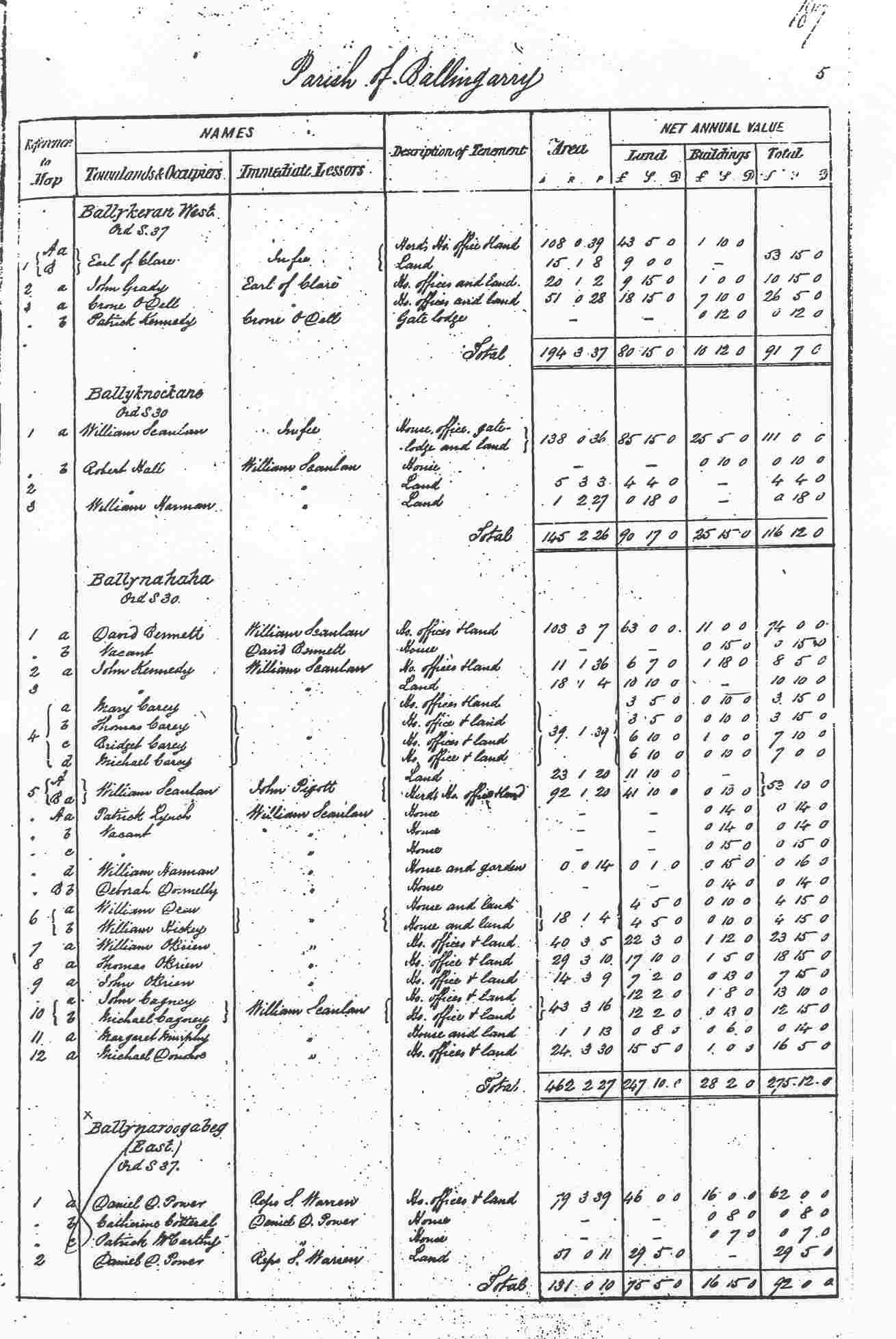
Griffith's Valuation, Ballynahaha townland, Ballingarry parish, 1852
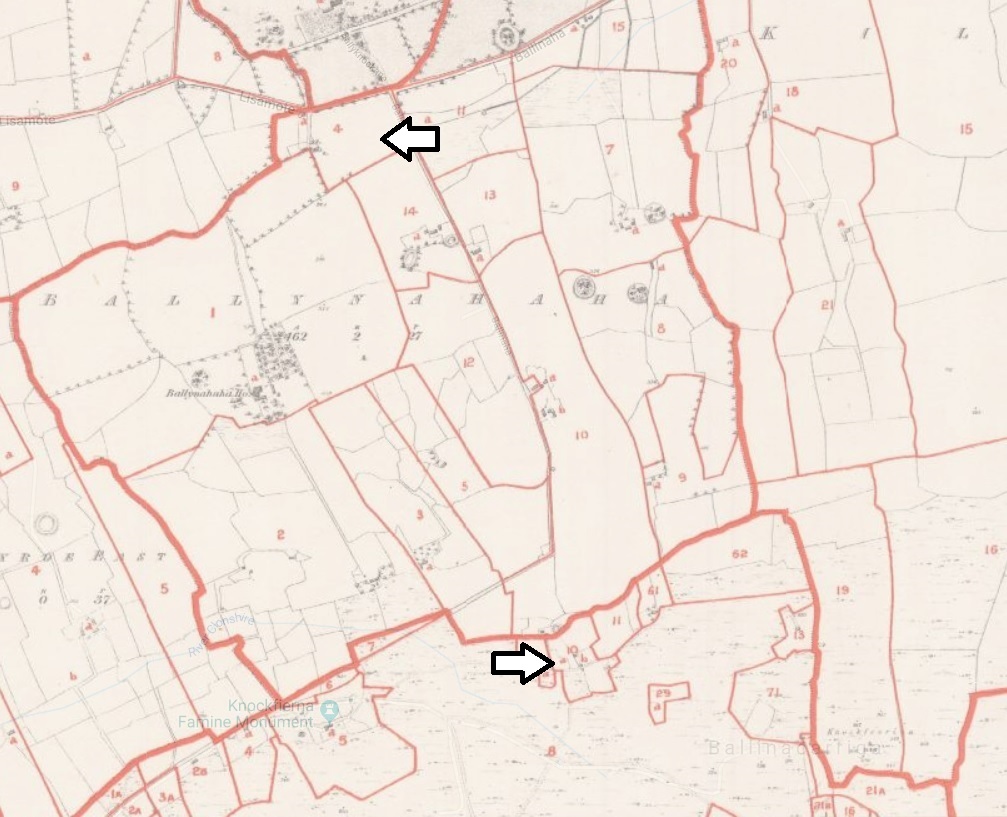
Records created in 1849 in preparation for Griffith's Valuation
give more details on the Carey's property. These records are the
House Book, Land Book, and Tenure Book.
A House Book record created in 1849 gives details about the size
of their houses. The unit of measure at this time in Ireland was
in feet. Richard's house was 21 1/2 feet long by 15 1/2 feet wide,
and 5 1/2 feet tall. The height may be measured from the ground,
with the house dug in to the ground inside. The quality rating for
the house of 3C+ indicates that it was an old thatched
roof house of stone walls with mud mortar, or mud walls of the
best kind. It was old, but in repair.
Jeffrey's house had belonged to Bridget Carey before 1849, but
her names was lined out in 1849 and Jeffrey's name was added. The
lot was Jeffrey's by 1852. His house was smaller - 10 1/2 feet
long by 15 feet wide, and 5 feet tall. The quality rating of 3C
indicates that it was an old thatched roof house of stone wall
with mud mortar, or mud walls of the best kind, which was old and
out of repair.
John Carey's house was bigger, although he had the smallest
property. It was 30 1/2 feet long by 16 feet wide by 5 feet tall.
The quality rating of 3B indicates that it was a
medium-age thatched roof house of stone walls with mud mortar, or
mud walls of the best kind, which was of medium age, slightly
decayed, but in good repair. John was living in a newer and larger
house than Richard and Jeffrey.
Jeffrey emigrated to Chicago with Richard in about 1863, and is
believed to be his brother. They were both about the same age.
Patrick owned the land on which Richard, Jeffrey and John's houses
stood, but Patrick owned no house. In another related record, he
is shown to be living with John, and is most likely the father.
John must be the oldest son, as the land passed to him.
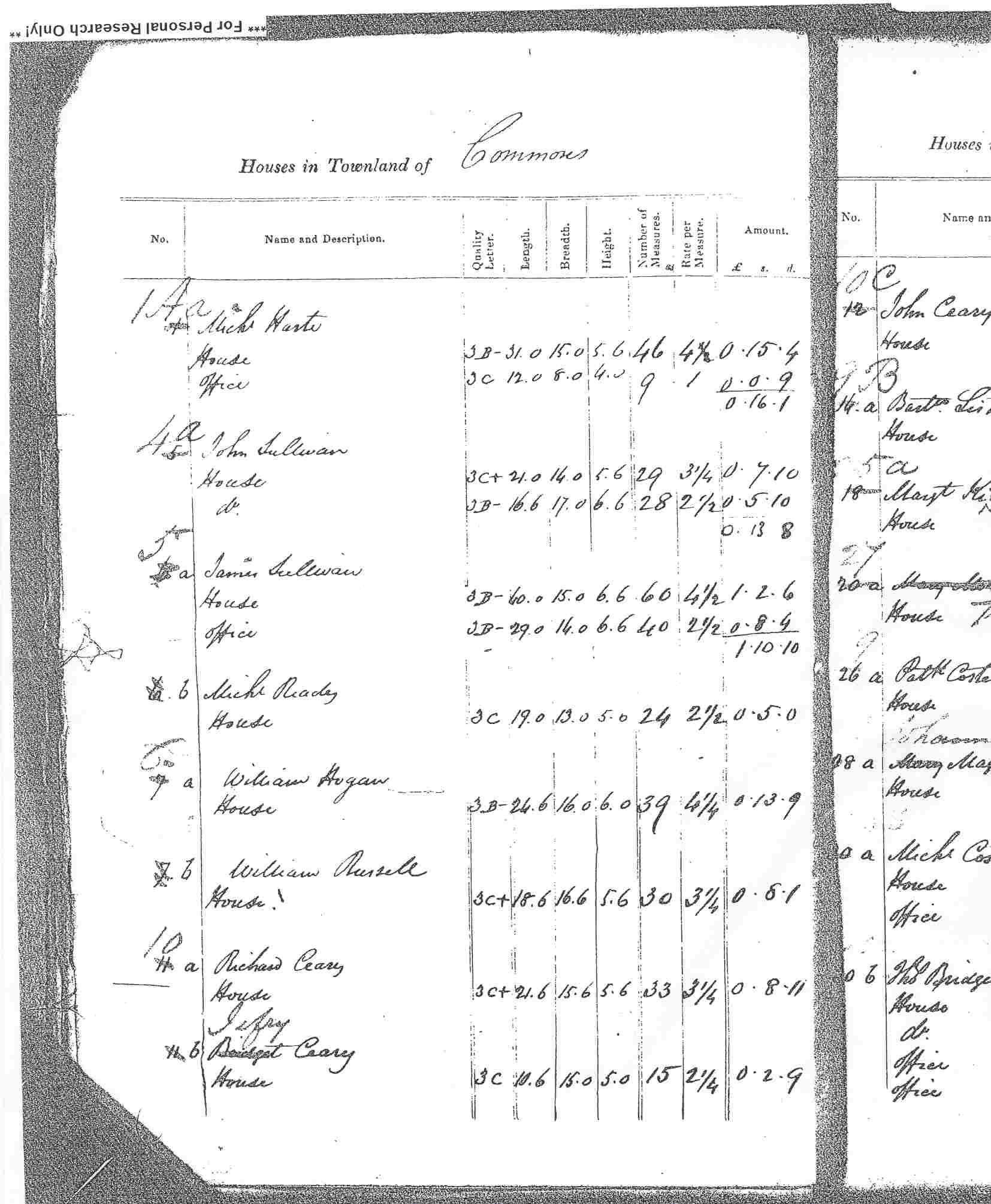
House Book, Common townland, 1849
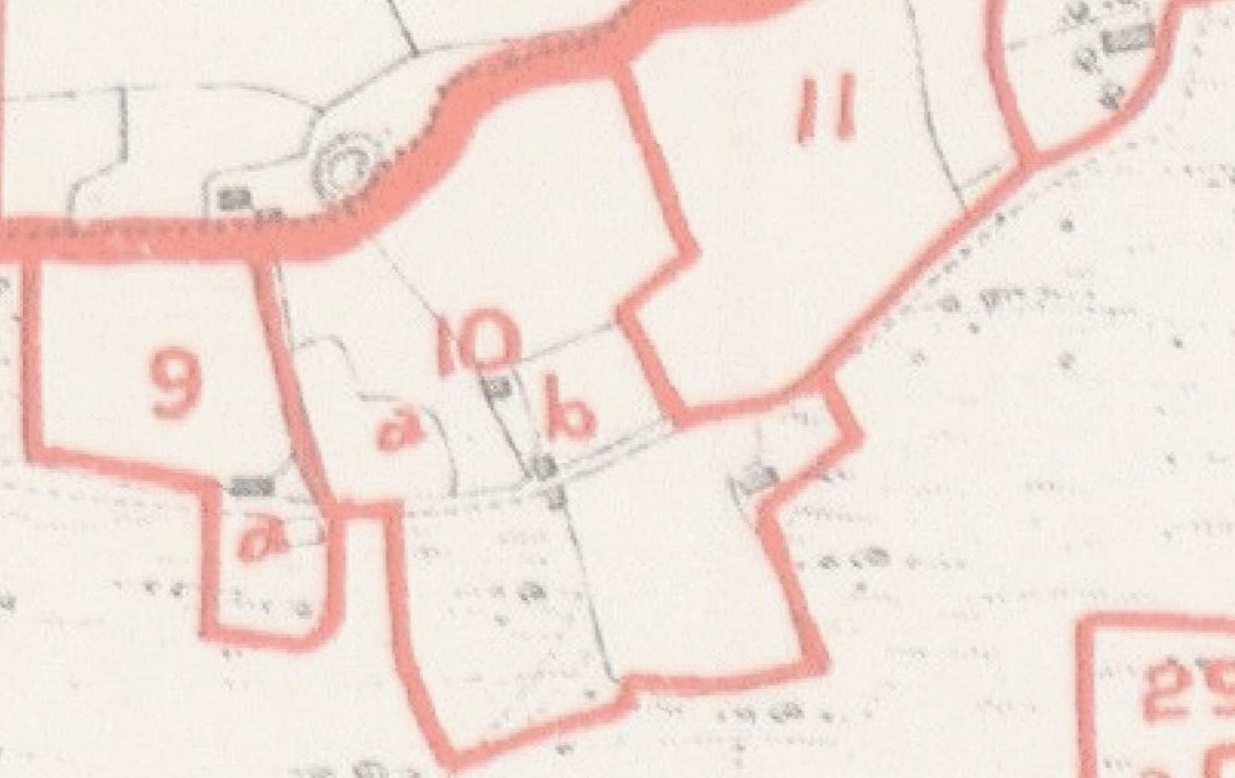
Close-up of the Carey's property on Lot 10 in Commons,
showing the locations of buildings on the property
A Land Book record shows the quality of the land the Careys owned.
It is shown as clay, and moory arable. The value of the house and
land did not exceed five pounds, so would not have been taxed.
Thomas and Patrick Carey had owned "heathy pasture" land
nearby, but did not own it by 1852.
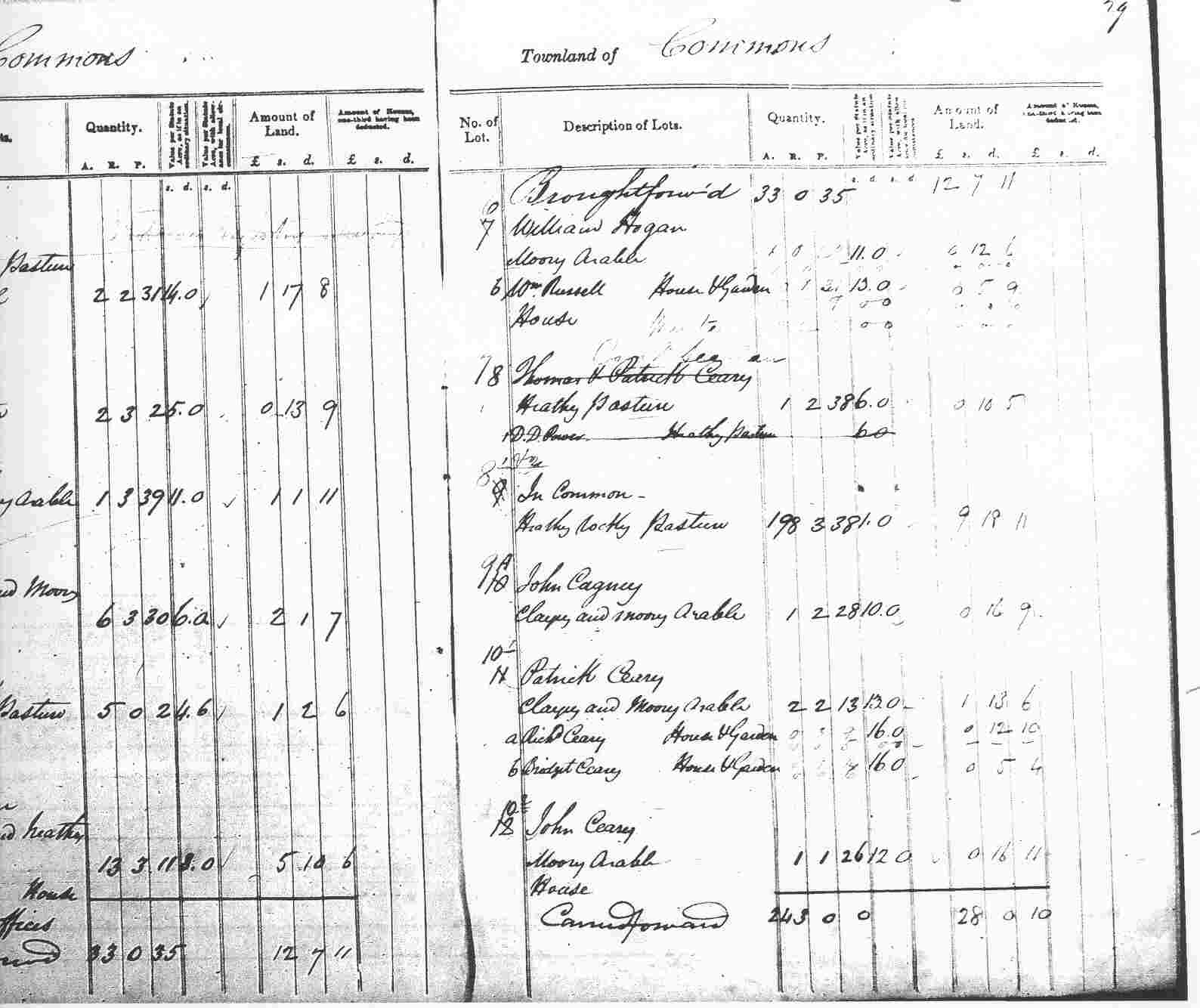
Land Book, Common townland, 1849
The Tenure Book gives details about the lease or ownership of the
land. This record provides some very interesting details. Patrick
and Richard Carey owned the land in fee, free forever, since 1827.
Since Edward Carey occupied the land in the 1826 in the Tithe
Applotment, perhaps 1827 is the year he died, and the land passed
to his family member. Bridget, then Jeffrey also owned the land
since 1827. John leased his house from Patrick, and they lived
together, as indicated by the small arrow near their names.
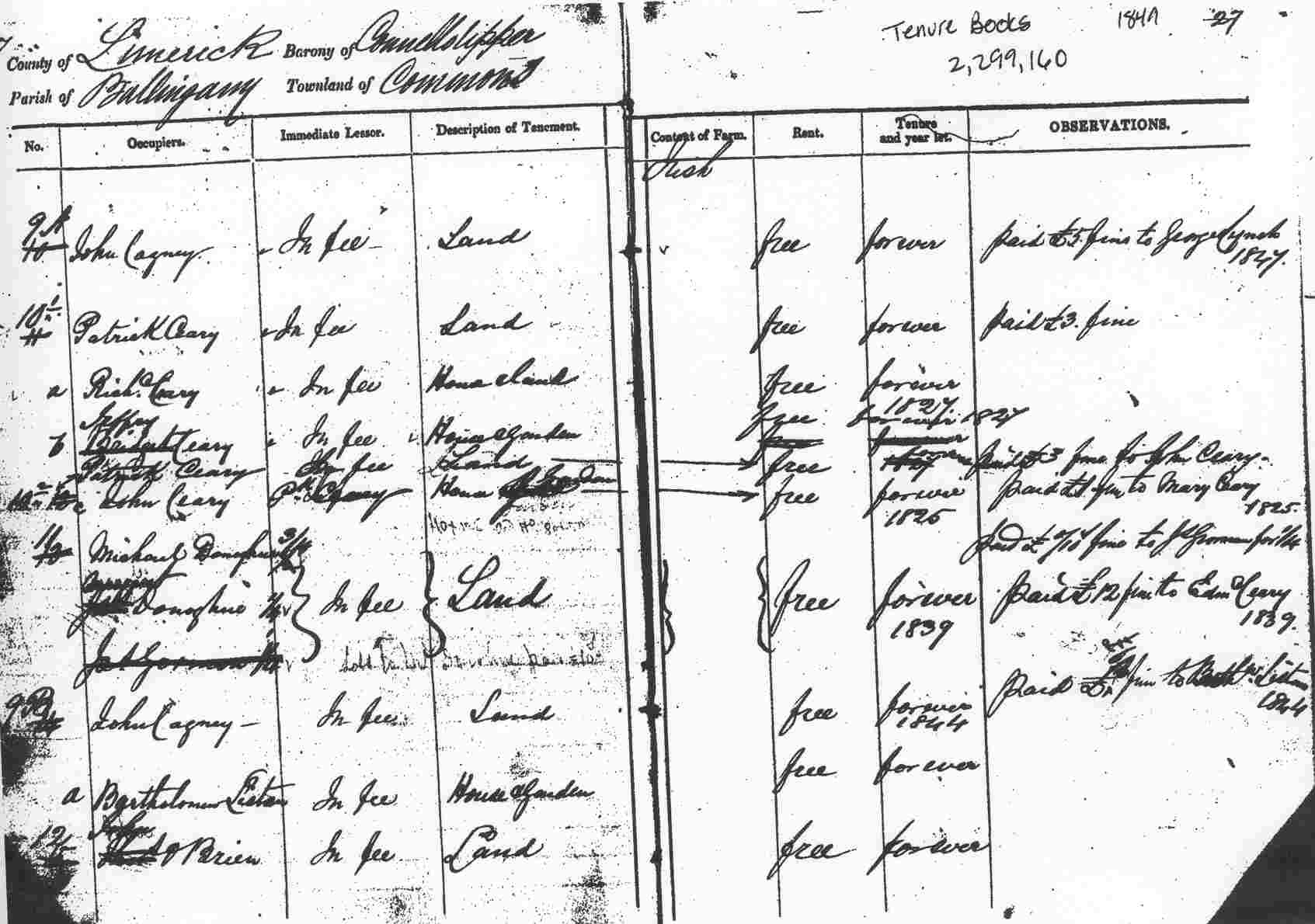
Tenure Book, Common townland, 1849
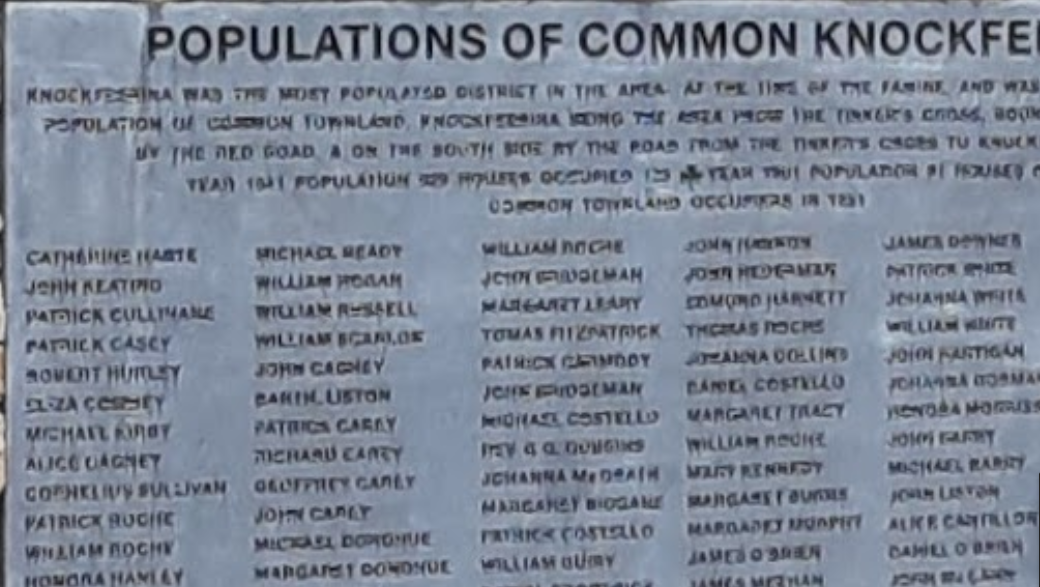
A memorial on Knockfierna lists the inhabitants of Common in
1851, including Richard, Patrick, Geoffrey, and John Carey
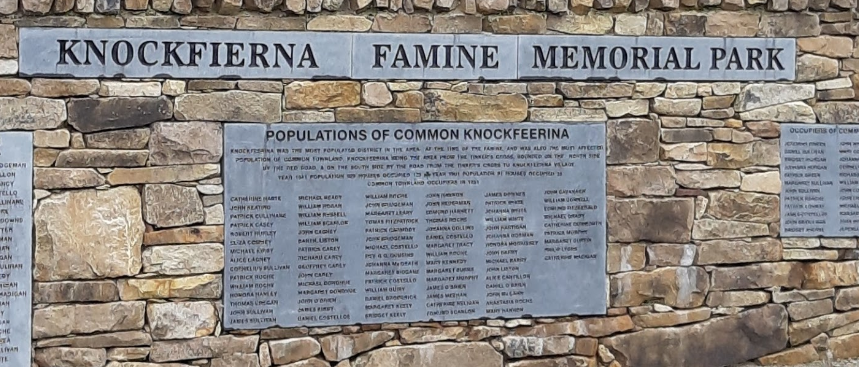
Ballingarry appears to be the Carey's ancestral homeland. The
earliest mention of the Careys of Ballynaha was in 1808, when J.
Keary of Ballynaha, land, was selected for the Grand
Jury. (Ballingarry, Granagh and Clouncagh, County Limerick,
Archival Records, 1800-1900). A description of Ballynaha
hints at a more ancient heritage: "In the west part is
O'Brien's Fort and in the southern part are Keary's two forts."
(Ballingarry, Granagh and Clouncagh, County Limerick, Archival
Records, 1800-1900)
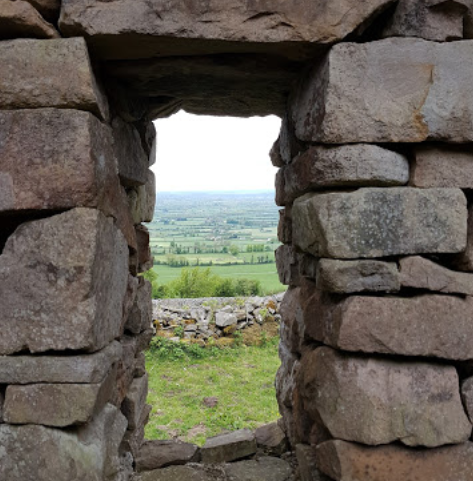
View from a Knockfierna famine house
The Careys in Ballynaha leased land from William Scanlan, who
seemed to be the immediate leasor for most of the land in
Ballynaha in Griffiths. He is shown as William Scanlan, Esq. in
the Tithe Applotment in Ballynaha in 1826. This is the landlord,
and he was known as "Counsellor Scanlan". Born in Ballingarry in
1799, Scanlan was a member of the Protestant gentry in
Ballingarry. He was the son of Michael Scanlan, the High Sheriff
for County Limerick, and the grandson of Michael Scanlan of
Ballynaha, and Maine in the parish of Mahoonagh. Scanlan's
connection to Mahoonagh may explain Richard and Geoffrey living in
Mahoonagh, possibly as they worked on another of the landlord's
property before returning to the Carey land. (Scanlan of the
Barony of Upper Connello, Co. Limerick`; Brian de Breffny and
Alicia E. Evers)
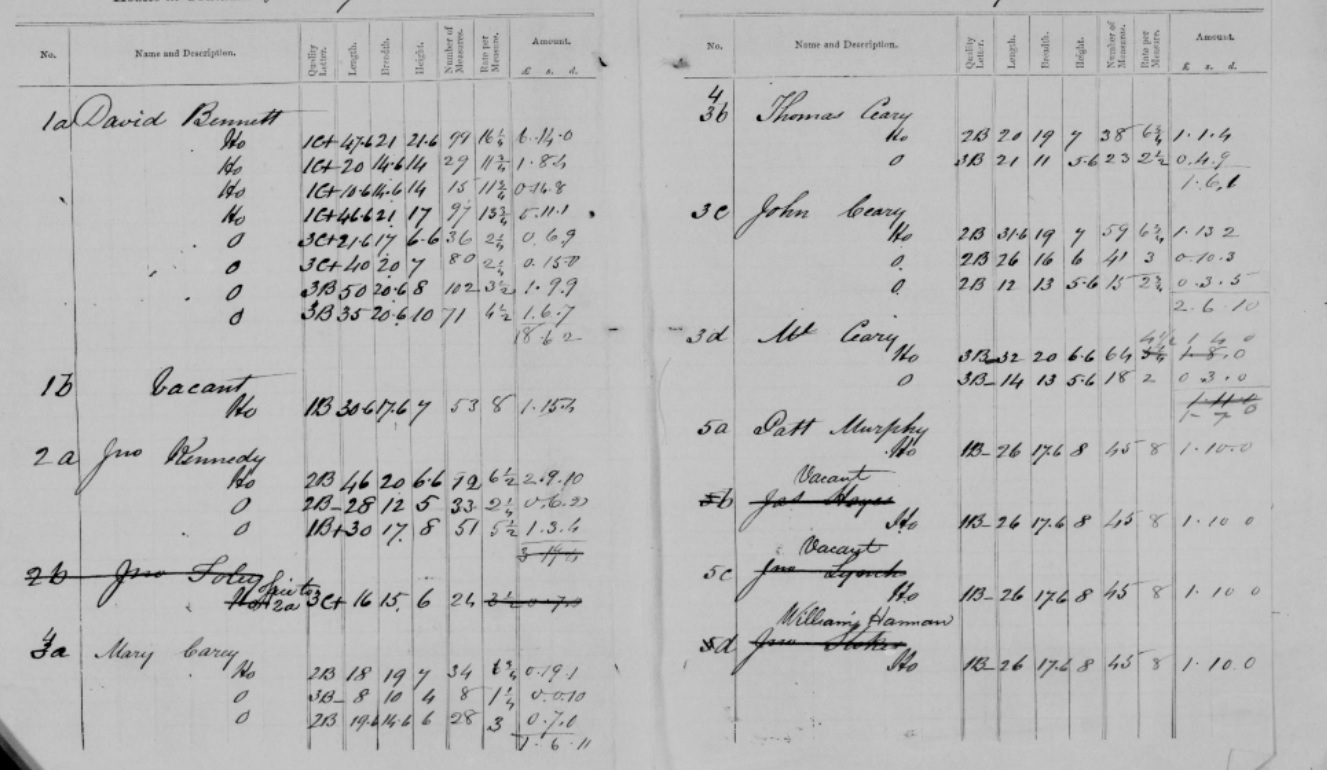
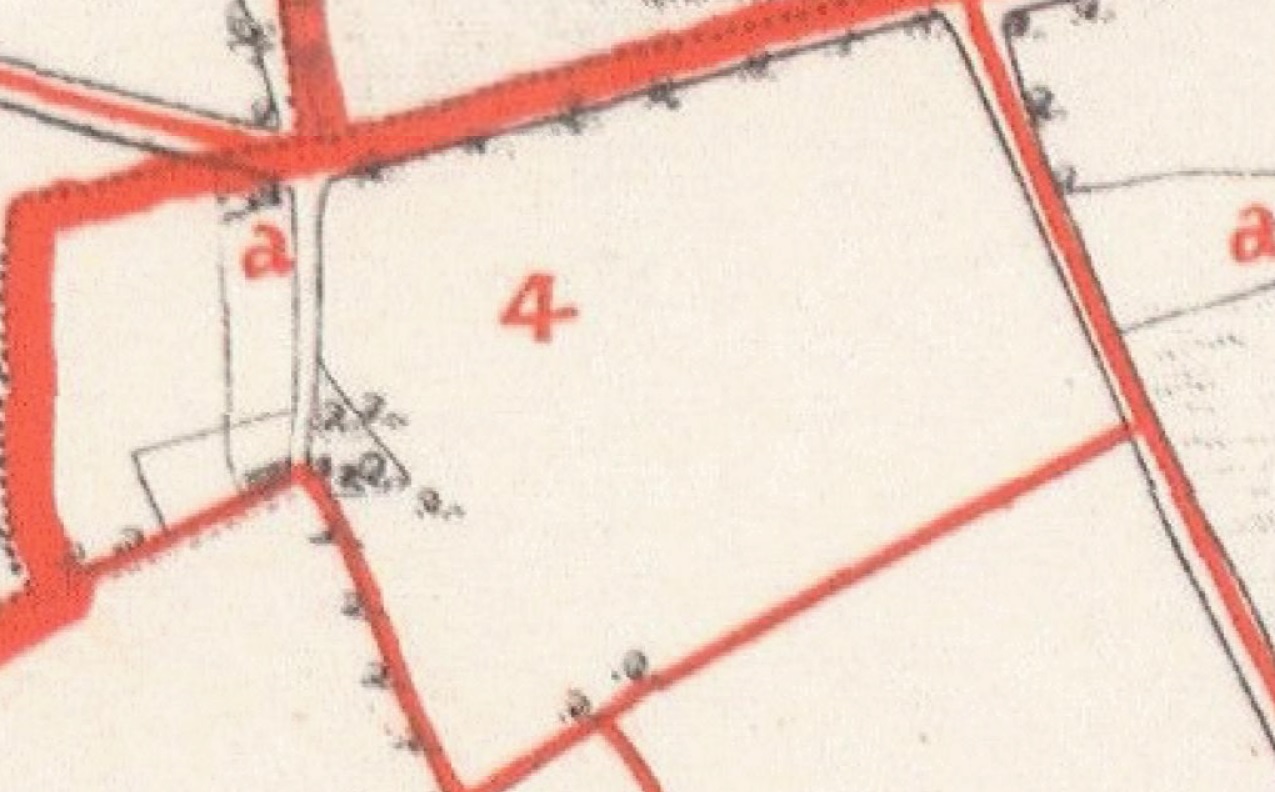
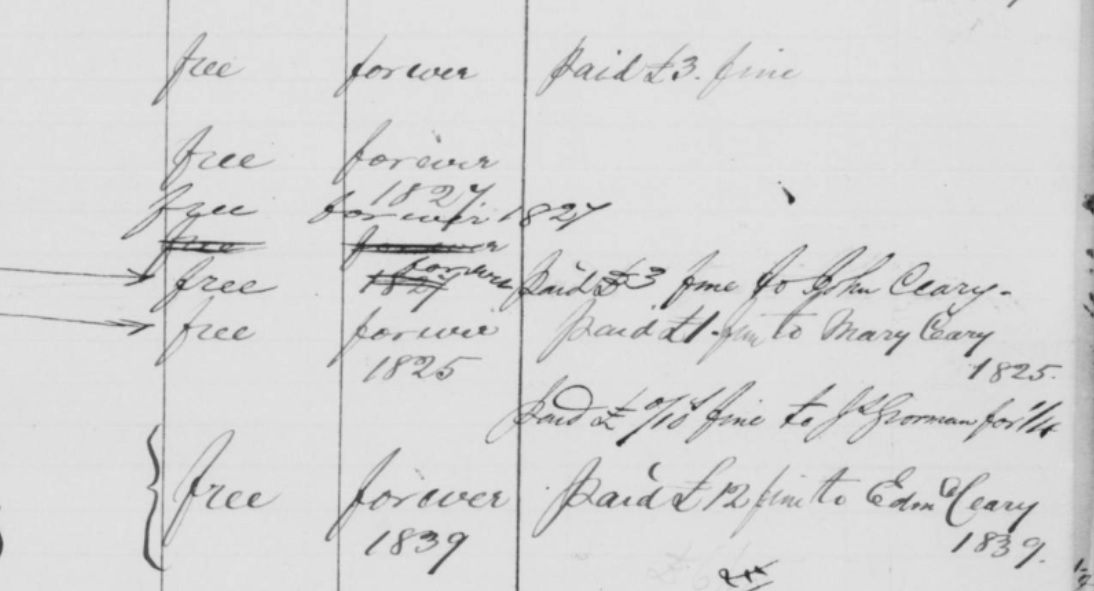
16 April 1825 Edmund Carey was a sponsor for Margaret,
daughter of John Meaher and Marie Aheren.
24 June 1825 Margaret Carey was a sponsor for John, son of
John Sullivan and Mary Rennahan.
7 February 1825 John Carey was a witness for the marriage of
James O'Leary and Catherine Aheren.
21 February 1826 Jeffrey Carey was a sponsor for James, son
of George Lynch and Mary Carey.
7 May 1826 Richard was a sponsor for John, illegitimate son
of James Connell and Honora O'Donnell.
7 September 1827 Thomas Carey was a sponsor for James, son of
Michael Kelly and Bridget Costeloe.
1 May 1827 Edmund Carey was a sponsor for Winifred,
daughter of David Lillis and Elizabeth White.
5 May 1827 Thomas Carey was a witness for the marriage of
Thomas Kelly and Helena Fitzmaurice.
There are several Careys found in the Ballingarry Tithe Applotment
of April 1827. They are concentrated in the townland of
Ballynahaha (which means the "town of the kiln"), with one
addition - John Carey is found in the townland of Ballinoe. There
are no Careys found in Mahoonagh in the Tithe Applotment.
The Tithe Applotment is a census taken of land holders. It was taken in Ballingarry in 1826. The land was assessed, and the assessed tithes were paid to the support of the Church of Ireland (Protestant), no matter the religion of the land holder. Ballinahaha is shown in this record as Ballinaha.

Tithe Applotment for Ballinaha, first page
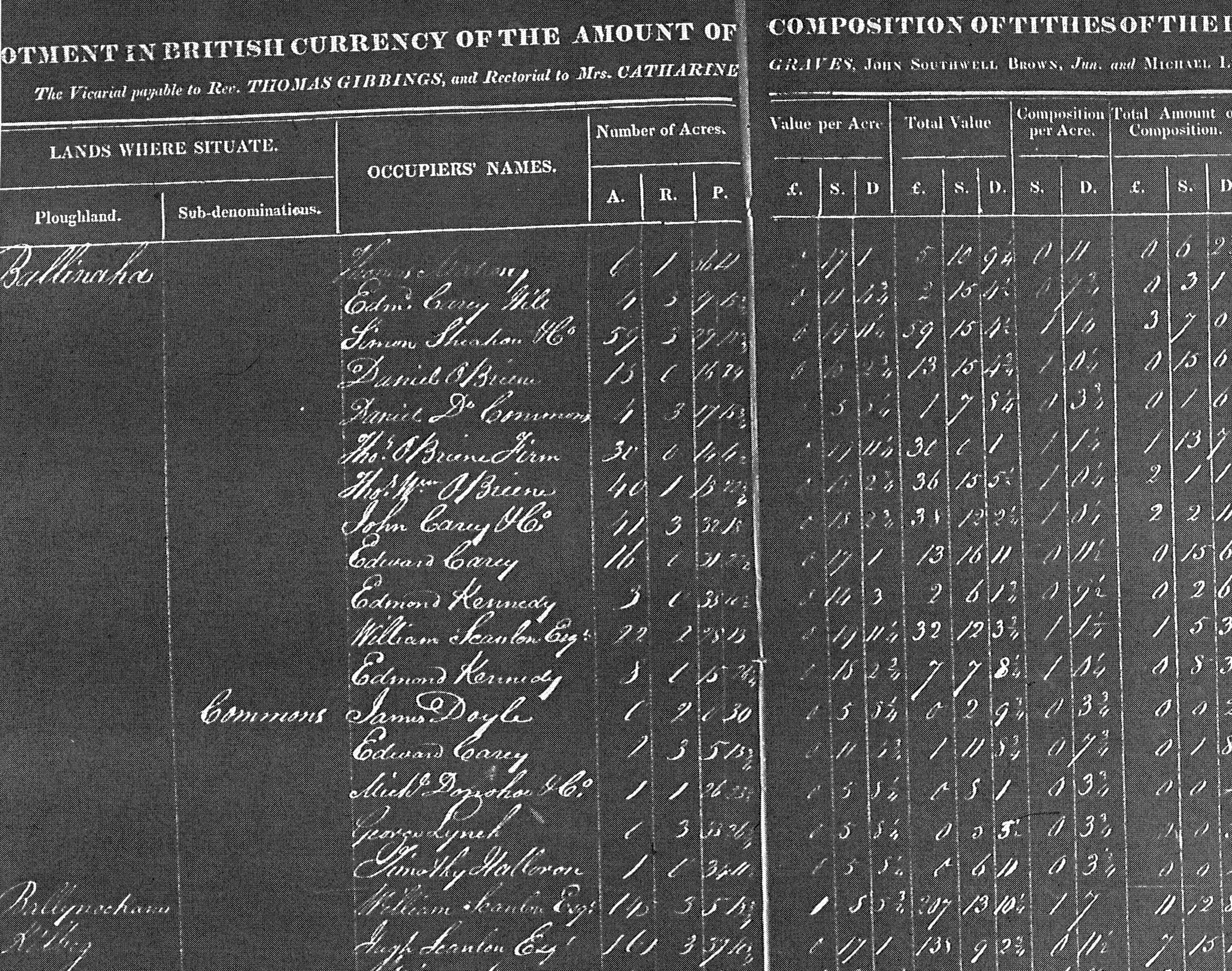
Tithe Applotment for Ballinaha, second page
This is the complete list of occupiers in 1826 for Ballynahaha in
the Tithe Applotment:
Lot # Occupier
246 Timothy Duane
247 John Riedy & co
248 Thomas Carey & co (acreage:
just
over 45 acres)
249 Own Deneely
250 Danl Sullivan
251 Thomas Mahony
252 Edmd Carey, hill (Note:
the word hill is a descriptor or agnomen to differentiate people
of similar names. In this case it means that Edmond Carey lived
on the hill. Acreage: just over 4 acres. Was the "hill"
Knockfierna?)
253 Simon Sheahan & co
254 Daniel O'Briene
255 Daniel
" , Commons
256 Thos O'Briene, Firon
257 Thos & Wm O'Briene
258 John Carey & co (acreage: just
over 11 acres)
259 Edward Carey (acreage: just over
3 acres)
260 Edmond Kennedy
261 William Scanlon, Esq.
262 Edmond Kennedy
In Ballynaha, in the sub-denomination of Commons:
263 James Doyle
264 Edward Carey (acreage: just over
2 acres)
265 Michl Donahoe & co
266 George Lynch
267 Timothy Halloron
In the townland of Ballinoe:
829 Patrick Cullinane
831 William Cullinane
xxx John Ceary
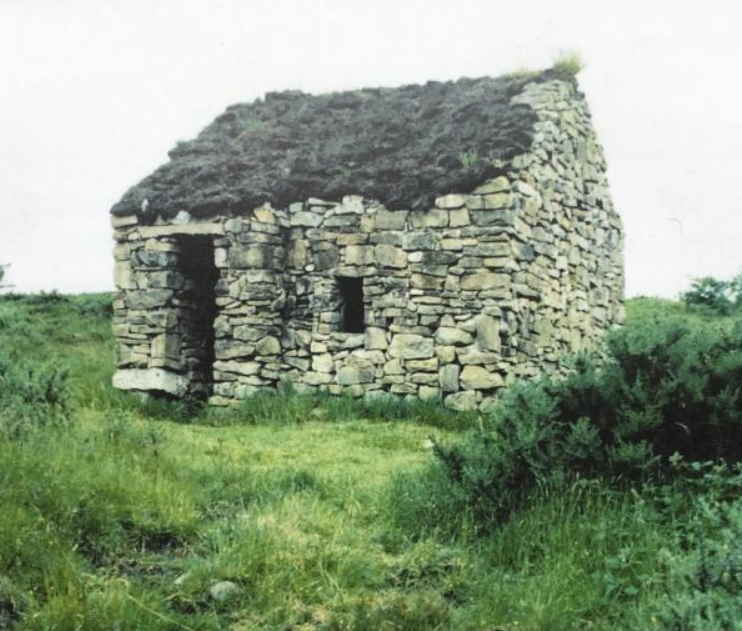
The population of Common townland was 629 in 1841, in 123 houses.
In 1851, just after the famine, the population dropped to 464
people in 87 houses. By 1901, the population was just 91 people in
just 26 houses.
Michael Carey of Ballynahaha and his family are found listed in a
pension application of 1917. Michael's son Thomas filed for an old
age pension. Since his birth was not recorded in the parish
register, an extract from the 1851 Irish census (later destroyed)
was used, and lists his entire family. Thomas was 14 years old at
the time of the census, making his year of birth 1837. His parents
were Michael and Ellen Carey. His sisters were Alice, Mary and
Catherine Carey. A handwritten note instructs that the siblings be
listed in order of birth. The family lived in Ballynahaha
townland, Ballingarry parish, County Limerick. Another handwritten
note in the margin says "Found, Michl Carey married 1836 &
1841, wife Margt married 1841, son Thos 14 yrs, no trace of
first wife". It seems that Thomas' mother Ellen died, and
Michael married again to Margaret in 1841. Thomas and Ellen must
have been married in 1836. Michael must have been born in about
1810, so was about the same age as Richard and Jeffrey Carey.
Michael is not listed on the Tithe Applotment of 1826, but is
found in the later Griffiths Valuation of 1852. His father may be
Thomas, who is listed in both valuations, as Michael's only son
was named Thomas.
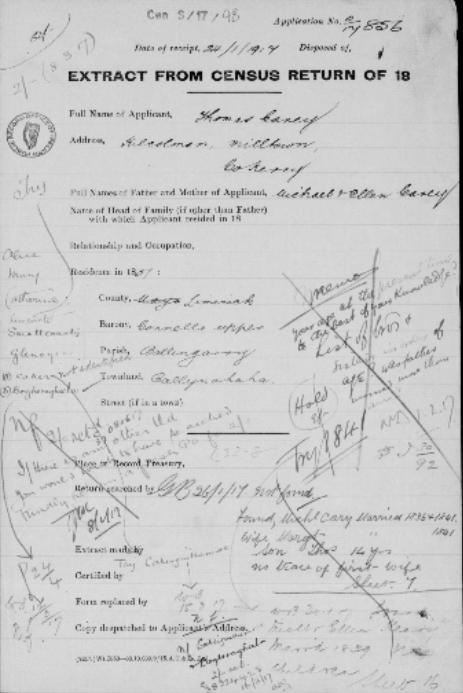
1917 Pension Application for Thomas Carey of
Ballynahaha (www.findmypast.co.uk)
The Tithe Applotment records show four Careys living in Ballinaha:
Thomas, Edmond, John and Edward. There is only one Carey - Edward,
living in the Commons area near Ballynahaha, therefore he is
likely to be the father of Patrick Carey, who owned inherited land
in Commons later. The Edward Carey in Commons, and the Edward in
Ballynaha are probably the same person, as no differentiator or
agnomen was used to identify them as separate individuals in the
same townland area. It seems that Edward owned a small amount of
property in Commons which was passed on to Patrick before 1849.
From the tenure books, we know that the land in Commons passed to
Patrick, Richard, and Bridget in 1827. Perhaps Edward died, the
land passed to his son, Patrick, who subdivided it for his sons.
Bridget is most likely Edward's widow. We also know that Richard
Carey had a son, Edward, who may have been named for his
grandfather.

There is a mention of John Carey of Ballingarry in the Limerick
Leader in 1850, when he was selected as a milk supplier to the
Union Workhouse at Croom:
Limerick Chronicle, June 29, 1850
“At a meeting of the Croom guardians, on Tuesday, George
Fosbery, Esq., in the chair, the following were declared
contracters: - Alexander Brothers of Limerick for timber, John
Cronin of Newcastle for groceries, rice, &c.; John Costelloe
of Rathkeale for brushes; and John Carey of Ballingarry
for milk."
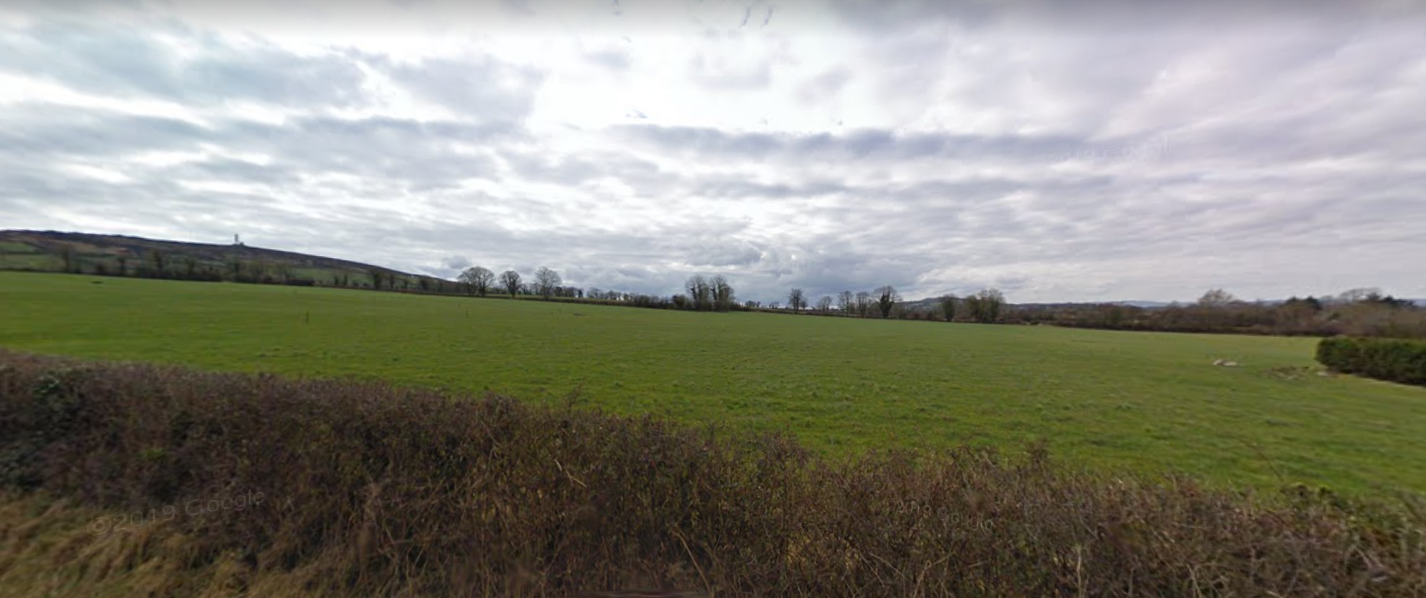
Some Careys are found in the List of Defaulters Summoned to
the Petty Sessions of Ballingarry for 21 November 1829:
The borrower was Honora Carey of Ballinaha
Her guarantors for the loan were: Michael Carey of Ballinaha,
and Michael Ready of Ballinaha
Source: Poverty Relief Loans on www.findmypast.ie
The borrower and guarantors had to be at least 21 years
old at the time of the loan. Honora Carey may be the same person
who acted as a sponsor in two of the weddings listed below. Honora
Carey was a witness at Jeffrey Carey's wedding to Mary Donahue in
1827 - possibly a sister to Jeffrey and Richard.
Careys are found in the Ballingarry parish registers baptisms and
marriages:
Edmund, christened 26 June 1825, son of John Carey and Bridget
Donohue.
Jeremiah Carey of Effin married Mary Kelly of this parish 31
July 1825.
Johanna Carey married John Rennahan 7 February 1826. Witnesses: John
Carey and Mary Carey.
Mary, christened 4 June 1826, daughter of Edmund Carey and Mary
Sullivan. Sponsor: Margaret Carey.
Mary, christened 9 July 1826, daughter of Jeremiah Carey and
Mary Kelly.
Sponsor: John Carey and Honora Kelly
Elizabeth, christened 4 September 1826, daughter of Thomas Carey and Mary Collins. Sponsor: Mary Carey
Anna, christened 23 September 1826, daughter of Patrick Carey
and ______ Dwyer.
Jeffry Carey married Mary Donohue 25 February 1827. Witnesses:
Honora Carey and John Carey.
Mary Carey married Michael Mallone of Knockaderry 25 February
1827. Witnesses: Edmond Carey and Margaret Carey.
Denis, christened 2 August 1827, son of Andrew Carey and Mary
Keily.
Sponsor: Jeremiah Carey
Mary, christened 5 October 1827, daughter of Jeremiah
Carey and Mary Kelly.
Bartholomew, christened 11 November 1827, son of John Carey
and Bridget Burns.
Margaret, christened 28 November 1827, daughter of John Carey
and Bridget Donohue.
Catherine Carey married Daniel Donohue 19 February 1828.
John, christened 25 May 1828, son of Thomas Carey and Helen
Connell. Sponsors: John Carey and Margaret Carey.
Margaret Carey married James McCarthy of Adare 18 February 1832. Witnesses: Honora Carey and John McCarthy.
Mary Carey married William
Hartigan 16 February 1833. Witnesses: Mary Carey and Patrick
Hartigan.
John Carey married Mary Houlihan 24 April 1833. Witnesses:
Daniel Carey and Bridget Houlihan.
Mary Carey married Patrick
Condon 11 February 1834. Witnesses: James Condon and Mary Carey.
Richard Carey of Castletown married Helen Healy 26 February
1834.
John Carey married Bridget Hartigan 9 February 1834. Witnesses: William Hartigan and Mary Carey.
Catherine Carey married John
Shaughnessy 3 March 1835.
There are gaps in the Ballingarry parish register in the 1830s and
1840s.
Patrick Carey married Bridget O'Brien 1 September 1859.
Witnesses: Mary Carey and Catherine Heenan.
John, christened 3 February 1850, son of Patrick Carey and
Ellen Kieff.
Edmond, christened 9 April 1852, son of Patrick Carey and
Ellen O'Keefe.
James, christened 28 June 1857, son of Thomas and Margaret
Carey.
Michael, christened 11 April 1857, son of Michael Carey and
Bridget Hayes.
In the 1860s more Careys are found in Irish civil records:
Mary, christened 20 January 1861, daughter of Michael
Callahan and Alice Carey.
Michael, christened 10 January 1862, illegitimate son of
Patrick Cary and Mary Sheely.
Bridget, christened 1 March 1862, daughter of Michael
Callahan and Alice Carey. Sponsor: Ellen Carey
Patrick, christened 20 February 1863, son of John Cary and
Bridget Shelly
Mary was born 12 April 1864, the daughter of John
Carey of Ballinaha, farmer and Kate Morissey. The same day, Mary
was christened 12 April 1864, daughter of John Carey and
Catherine Morrissy. Sponsors: Daniel Cagney and Mary Morrissy.
John was born 26 January 1866, the son of John Carey of
Ballinaha, farmer and Catherine Morrisy. The same day, John was
christened 26 January 1866, son of John Carey and Catherine
Morrissy
Edward was born 4 December 1867, the son of John Carey of
Ballinaha, farmer, and Catherine Morrissy. The same day, Edward
was christened 4 December 1867, son of John Carey and Catherine
Morrissey of Ballinaha. Sponsors: John Carey and Helen Tuomy
Thomas was born 1 December 1868, the son of John Carey of
Ballinaha, farmer and Mary Sullivan.
Bridget was born 25 January 1869, the son of John Carey of
Ballinaha, farmer and Catherine Morrissey. The same day, Bridget
was christened 25 January 1869, daughter of John Carey and
Catherine Morrissy, Ballinaha.
Margaret was born 15 June 1871, the daughter of John Carey of
Ballinaha, farmer and Mary Sullivan; died 19 June 1871
in Ballinaha.
Thomas was born 2 June 1872, the son of John Carey of
Ballinaha, farmer, and Mary Sullivan; died 10 June 1872 in
Ballinaha.
Michael was born 15 March 1873, the son of John Carey of
Ballinaha, farmer and Mary Sullivan; died 8 April
1873 in Ballinaha.
John Carey of Ballinaha was born in
1845, and died 15 April 1874 in Ballinaha,
just 29 years old.

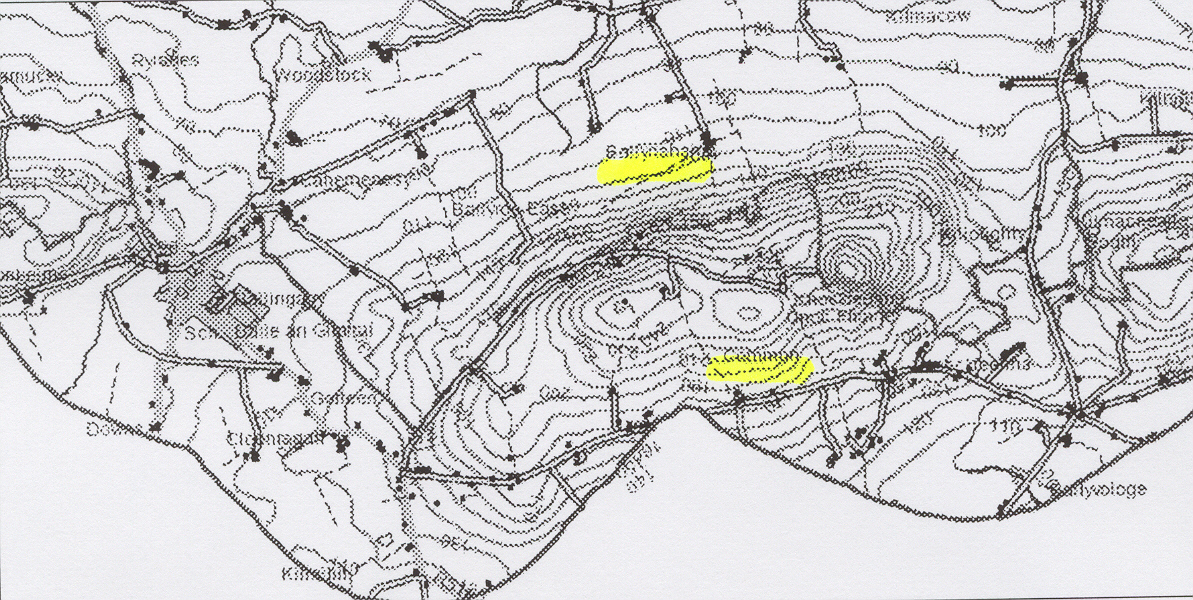
Ballingarry topographical map with Common and Ballynahaha
highlighted. Knockfierna is to the east of Common, and the
town is to the west.
Knockfierna
Ballingarry is dominated by the hill of Knockfierna. A history in
the late 1800s describes Ballingarry in this way: "The village
of Ballingarry lies just within the upper or southern division
of Connello Barony, about half-way between Bruree and Askeaton.
Its population is roughly 400; in 1837 there were 1,685
inhabitants, these being largely weavers, boot, brogue and
patten makers, turners or makers of piggins, harness makers,
carpenters, wheelwrights, smiths, nailers and chain
makers...Markets were held twice weekly, and fairs four times a
year. The glory of Ballingarry has departed...The town is
divided into two sections by the Grinoch (grannach, gravelly)
stream. This flows between two hills or ridges, up the lower
slopes of which the streets climb, Main Street toward
Knockfierna, Turret Street passing up over a shoulder of the
ridge opposite. " Records of Ballingarry, G.F.
Hamilton
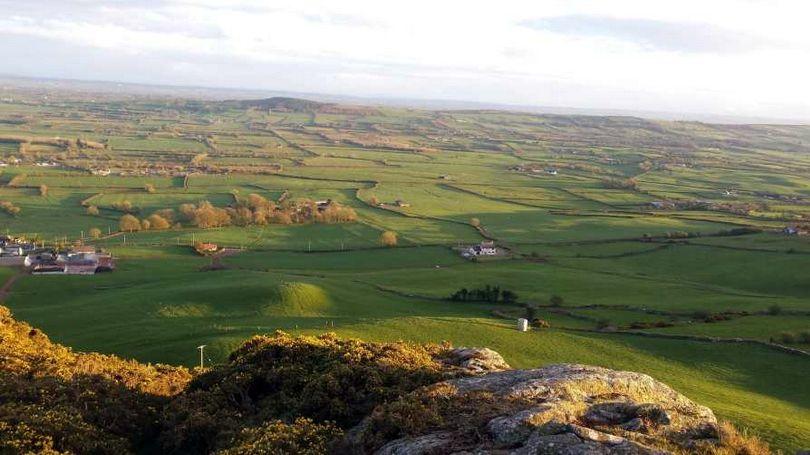
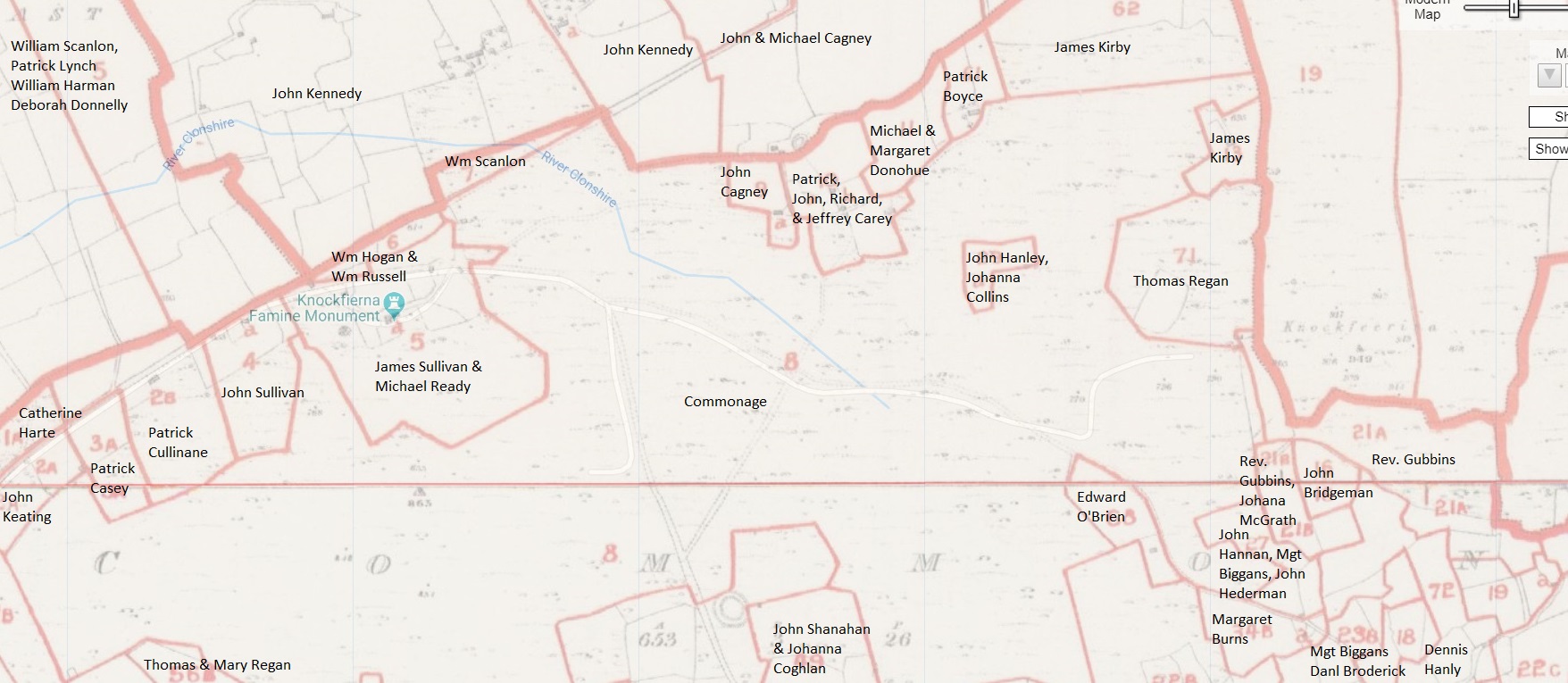
After Griffith's Valuation, additional valuation lists were
created to show changes in ownership, and it is possible to trace
the ownership of the land in Common. The next valuation was taken
in about 1862, and shows only Richard and Geoffrey Carey. Patrick
and John are not listed here. This may be an accidental omission,
as they appear in the next update. Michael Donohoe was now shown
as owning Lot 10c.
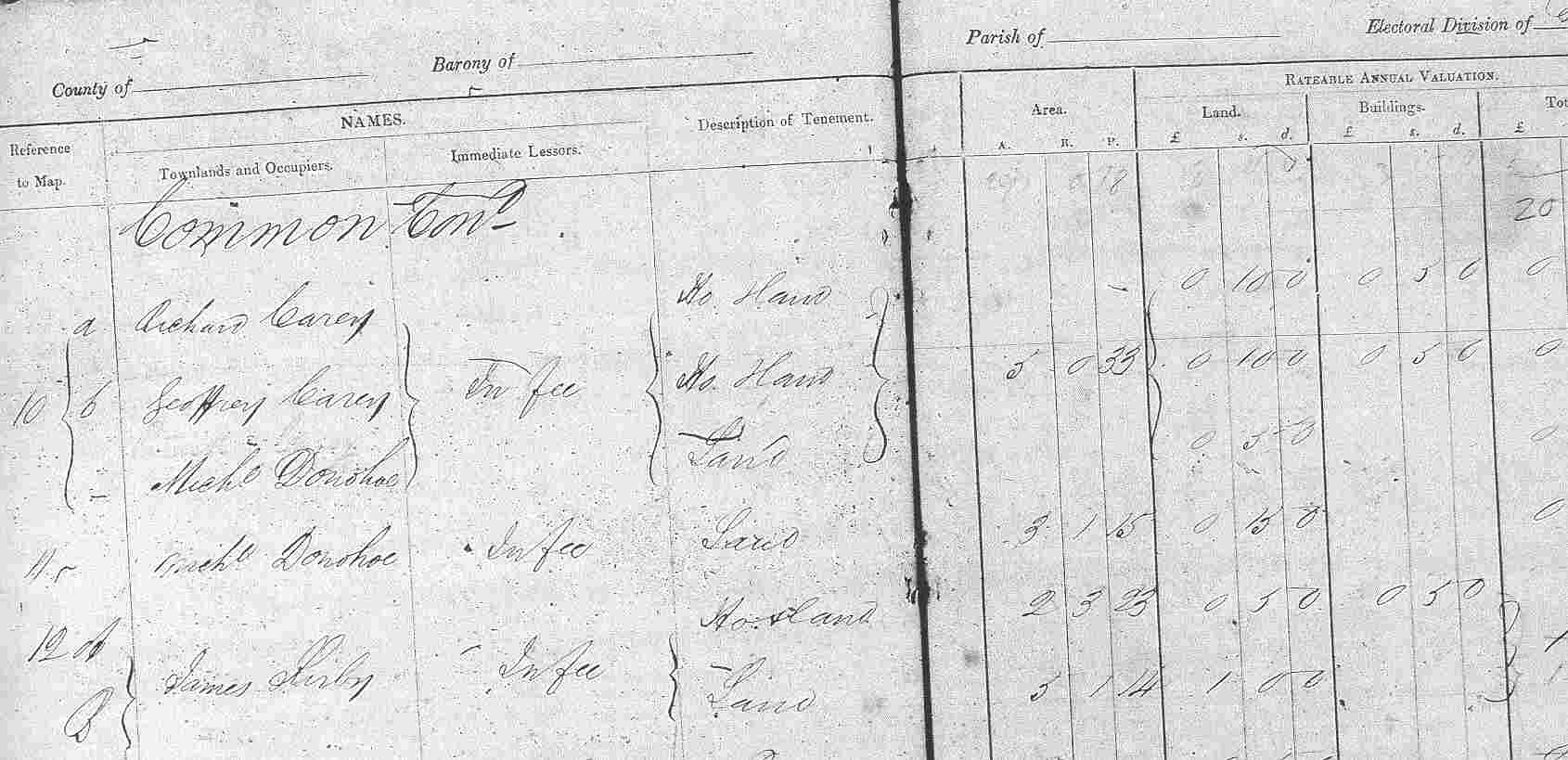
Valuation List, about 1862
Richard is found twice in the Petty Sessions Court records in
1862, being fined when his farm animals got out:


Defendant Richard Carey of Knockfierna, witness Luke Kelly,
was charged with "Your ass wandering on the public road at
Kilinchile on the 22nd" and was fined three pence and one
shilling cost. Date of record: 30 August 1862. (Irish
Petty Sessions Court Registers, 1828-1912 on findmypast)
In the next Valuation List update, about 1863-5, Jeffrey Carey
has been crossed out in 1865, and Bridget Carey owned his house
and land. Patrick Carey was shown at 10b, and is also crossed out,
and Bridget owned his land. This may indicate that Patrick died in
about 1865, and his widow Bridget inherited the house. Jeffrey's
date reflects his immigration to America in 1863. Richard was
still shown as owning his land, but has also immigrated.
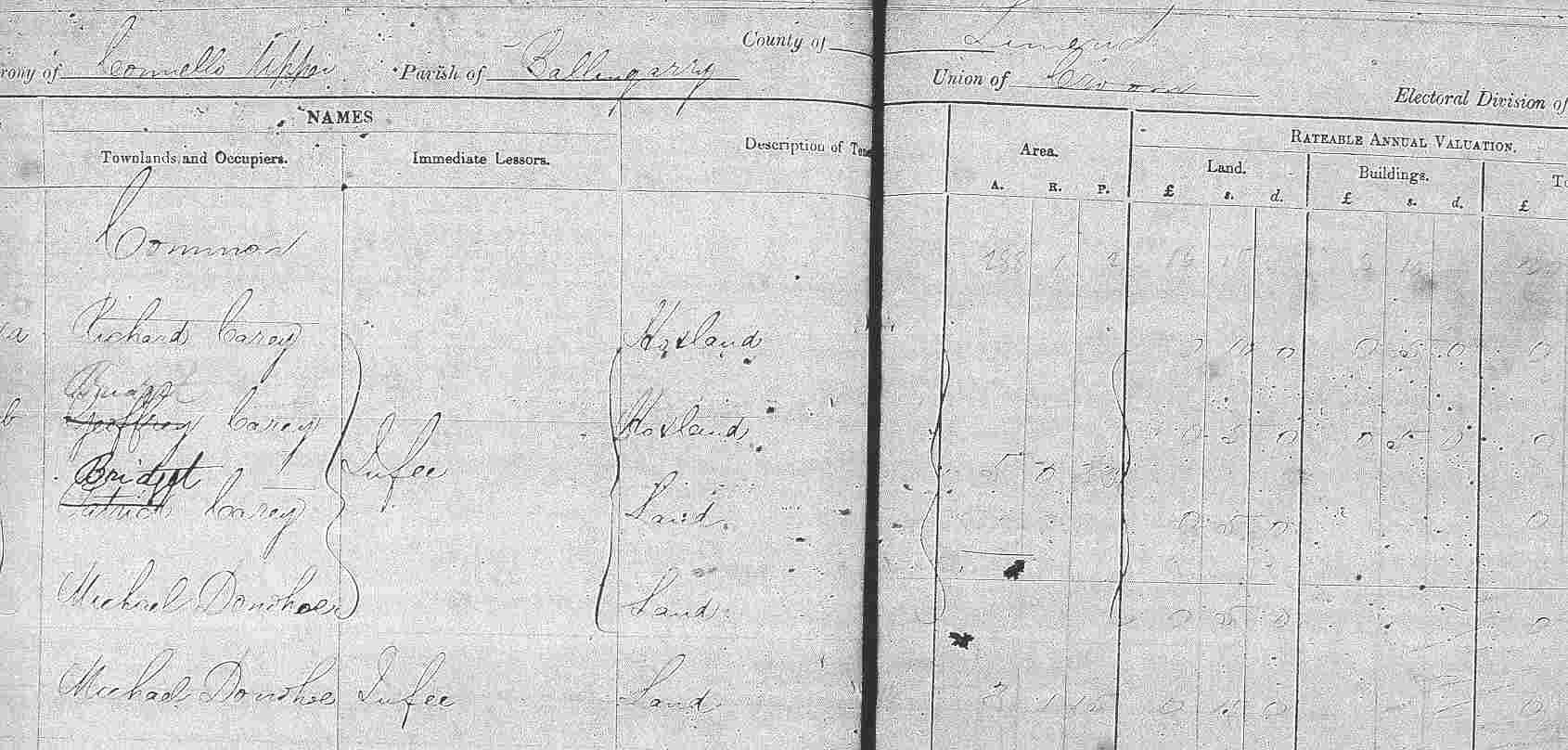
Valuation List, about 1863-5
The next list, in about 1866, shows Richard crossed out, and his
land passing to John. Bridget was also crossed out, and her land
also passed to John. Michael Donohoe's land has gone to Daniel
Cagney.
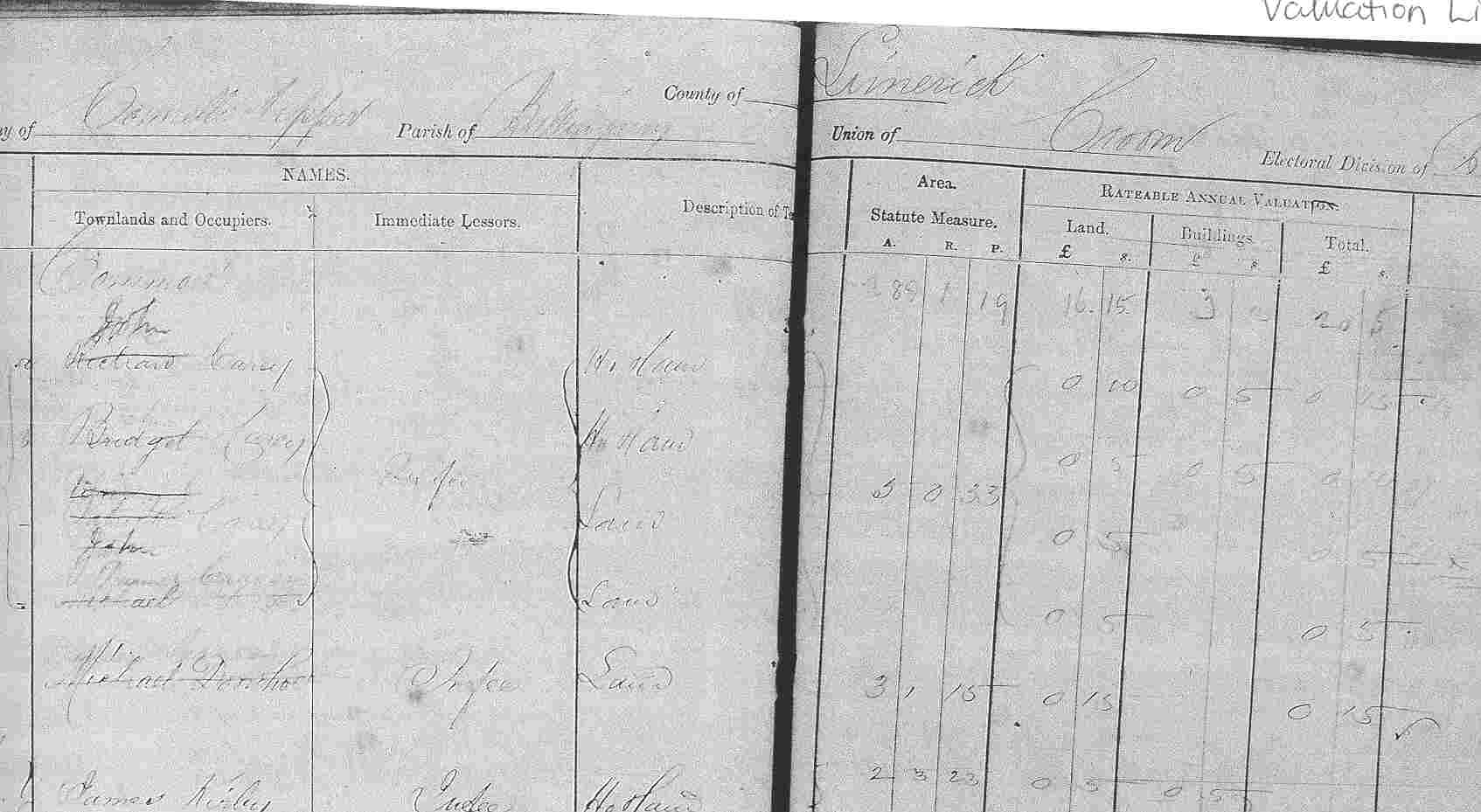
Valuation List, about 1866
John Carey of Ballinaha appeared in the Dog License Registers
books starting in 1869, with a black and white terrier. He is
found in the Dog License Register again in 1873, with a black
terrier. (Ireland Dog License Registers on www.findmypast.com)
In the next Valuation List update, John Carey continued to own
the land. In about 1873, the house is shown as down, and John
owned only land. At the same time, in 1871 he begins to appear in
the Carey Lot 4 in Ballynahaha, with a house, offices, and about
26 acres. This supports the connection between the Careys of
Common and Ballynahaha.
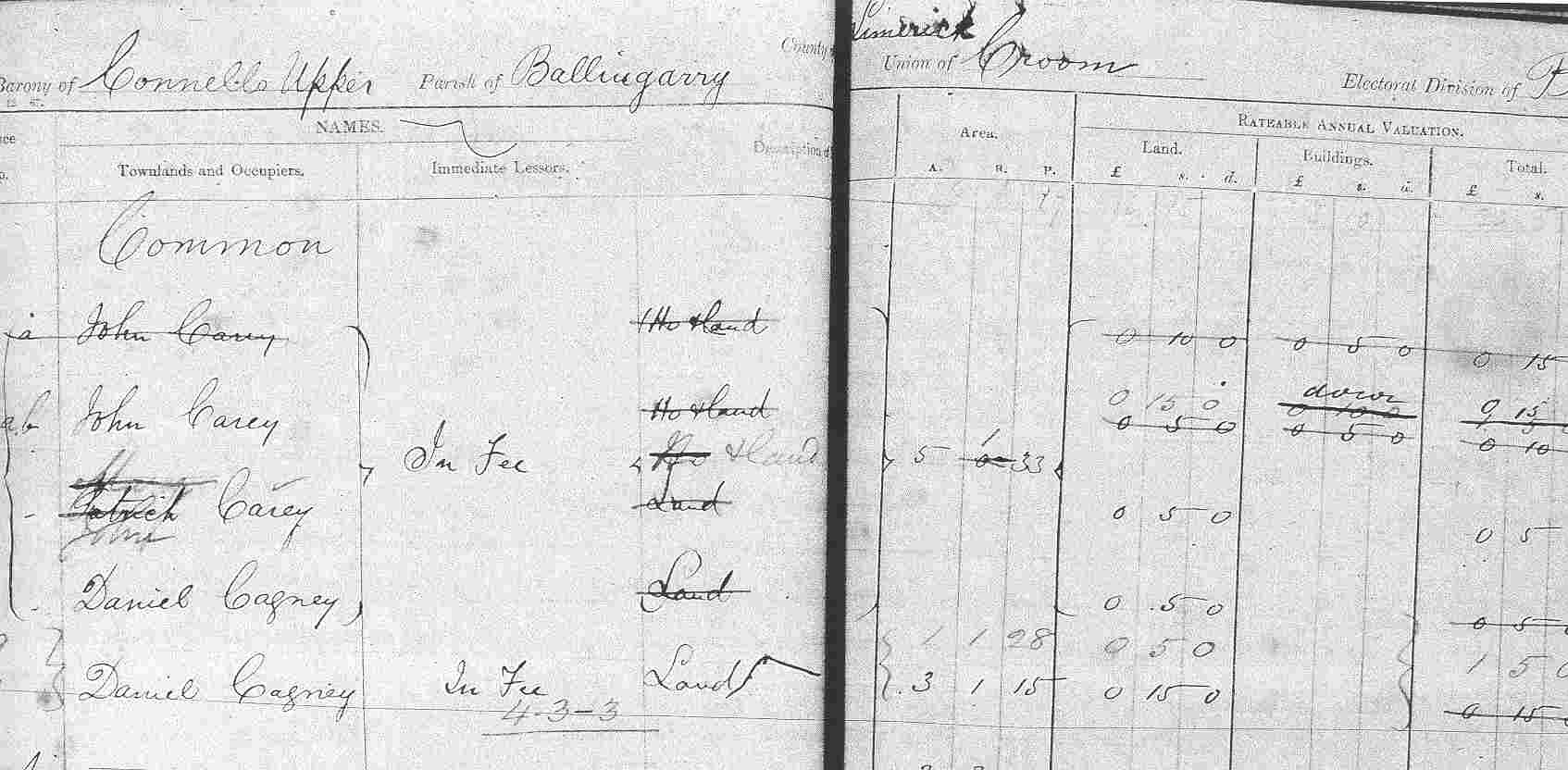
Valuation List, about 1871-5
Bridget Carey of Ballinaha died 8 February 1878. She was shown as
the widow of a farmer. Her age at death was 70 years old, making
her born in about 1808. John Carey was present at her death.

Death certificate for Bridget Carey of Ballinaha on 6 February
1878. This is likely the wife of Richard Carey's brother John,
who was born about 1800.
Throughout the 1880s and 90s, John Carey continued to own land
only in Common, and a house in Ballynahaha. Since it is unlikely
that this is the same John Carey (who would have been born in
about 1800), John must have had a son named John. There is a death
certificate for John Carey senior of Ballynahaha who was born in
1837.
John Carey of Ballinaha continued to appear in the dog license
registers from 1878 to 1919, with a brown and white or black
terrier, then greyhound, then black collie. (Ireland Dog
License Registers on www.findmypast.com)
In 1894, John Carey of Ballinaha married Mary Casey. John, a
bachelor and farmer, married Mary, a spinster and farmer on 16
June 1894 in Ballingarry. John was shown as the son of John Carey,
also a farmer. Mary was the daughter of Cornelius Casey, a farmer
of Ballyelan.
In the 1901 census for Ballynahaha, John Carey was shown as head of the house, with his parents John and Kate Carey living with them:
John Carey, head, Catholic, can read and write, age 35,
farmer, married, born Co Limerick, speaks English
Mary Carey, wife, Catholic, can read and write, age 40,
housekeeper, married, born Co Limerick, speaks English
Ned, son, age 4
Con, son, age 2
Kate, daughter, age 5
Mary, daughter, age 3
Margaret, daughter, age 1
Eliza, daughter, age 1 month
John Carey, father, Catholic, cannot read and write, age 60,
retired farmer, married, born in Co Limerick, speaks English and
Irish
Catherine Carey, mother, Catholic, cannon read and write, age
65, married, born in Co Limerick, speaks English and Irish
The house is described as having five rooms, with three windows
in the front of the house. John Carey was the owner. The walls
were of stone, brick or concrete, not mud or wood. There were four
outbuildings - a stable, cow house, piggery and fowl house. It is
interesting to note that John and Catherine, the grandparents both
spoke English and Irish, but the next generation spoke only
English. The next generation had also learned to read and write,
but presumably in English only.
John Carey, senior, of Ballynahaha died 25 January 1906, age 69,
probably of prostate disease.

In the 1911 census for Ballynahaha, John Carey was shown with his family:
John Carey, head, Catholic, age 45, farmer, married 17 years
Mary Carey, wife, age 50
Catherine Carey, mother, age 80, widow
Ned, son, age 15
Cornelius, son, age 12
Catherine, daughter, age 16
Margaret, daughter, age 11
Eliza, daughter, age 10
Hannie, daughter, age 8
This would make this John Carey born in 1866. Therefore it is probable that Patrick and Bridget Carey (born about 1780) had a son John (born about 1800), son Richard (born about 1802), and son Jeffrey (born 1807). John had a son, John, born in 1841 who married Catherine Morrissey (born in 1836). They had a son, John, born in 1866, who married Mary in 1884.
Their son, Edmond (Ned) was shown owning the
land in Common until at least 1970. He inherited it from his
father who died in about 1945. Mike Burke, a grandson of Con
Carey, Ned's brother, shares this information about the family:
Mike's grandfather, Con emigrated to Chicago: "He emigrated
there in 1925 but had returned by 1930. While there he met
his wife, Catherine McMahon, also from Ballingarry
parish.They both returned to Ireland to get married."
Con Carey fought in the Irish War of Independence with the 4th
Battalion, West Limerick Brigade of the Irish Republican Army
from 1917-1922, and received the Service medal. (Ireland
Military Pensions and Medals; www.findmypast.co.uk)
Ned Carey also fought in the Irish War of Independence
with the 4th Battalion, West Limerick Brigade, and received a
Service Award. (Ireland Military Pensions and Medals;
www.findmypast.co.uk)
Con Carey and wife, Catherine in
Chicago
He also remembered his great-aunt Maggie
Carey:. "She never married but moved to live with Con and
Catherine after Ballinaha was sold. I remember going on
holidays as a child there and Maggie playing card games with
me – she was a lovely gentle person. Edmond (Ned) who took
over the farm in Ballinanha was killed around 1970 –
he cycled out in front of a car. Ballinaha was sold then. I
also remember Eliza (Lizzie) – again a quiet, gentle woman."
(E-mail
from Mike Burke, 2012)
Neighbor lady, Mike Burke, and Maggie Carey
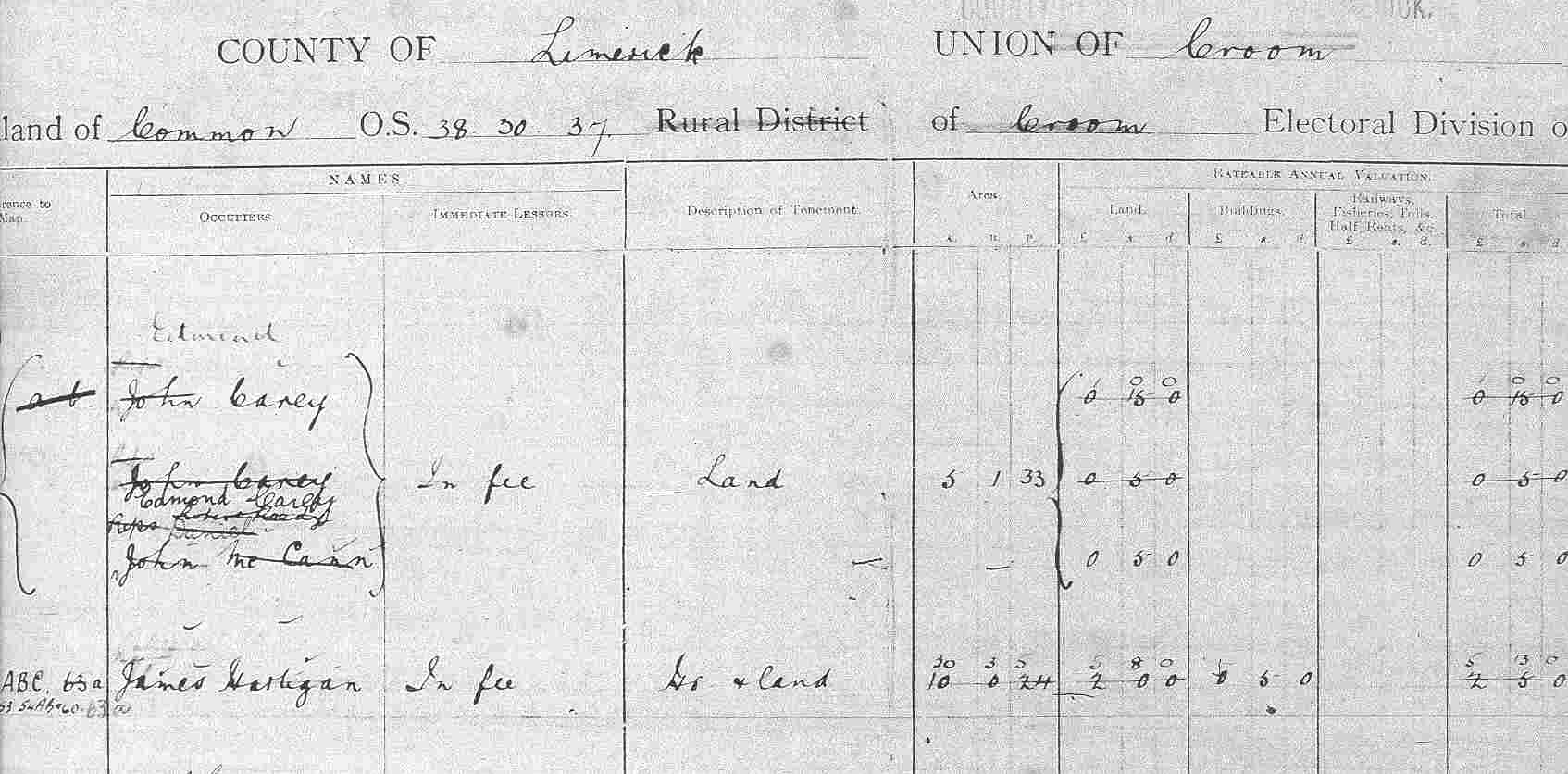
Valuation List 1932-1970
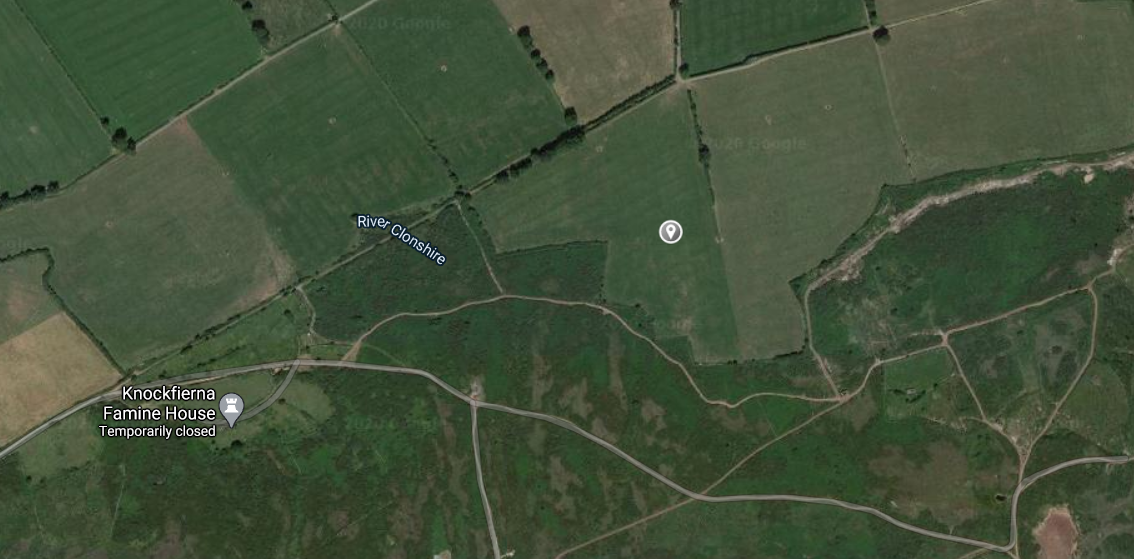
Current overhead view of the Carey land in Common (at the
marker)
The Carey house and farm were sold after 1970 to the Cagney family, who own it today. The house was razed, but a garden wall and original gate remain. The Cagneys transplanted daffodils from the Carey land, and also moved a large stone, which they had inscribed for the Millenium. The following pictures were provided by Mike Burke, who visited the farm.
The entrance to the Carey farm and land (photo by Mike Burke,
2012)
Daffodils transplanted from the Carey farm to the Cagney's (photo by Mike Burke, 2012)
The old garden wall on the Carey's property - with
Knockfierna in the background (photo by Mike Burke, 2012)
The original gate to the
Carey's farm in Ballinaha
(photo by Mike Burke, 2012)
The stone removed from the Carey land - the last line says,
"Wherever your life's journey takes you
Always remember your way home."
(photo by
Mike Burke, 2012)
The view up the lane to the
Carey's farm
(photo by Mike Burke, 2012)
This link
gives a glimpse into a hike up Knockfierna.
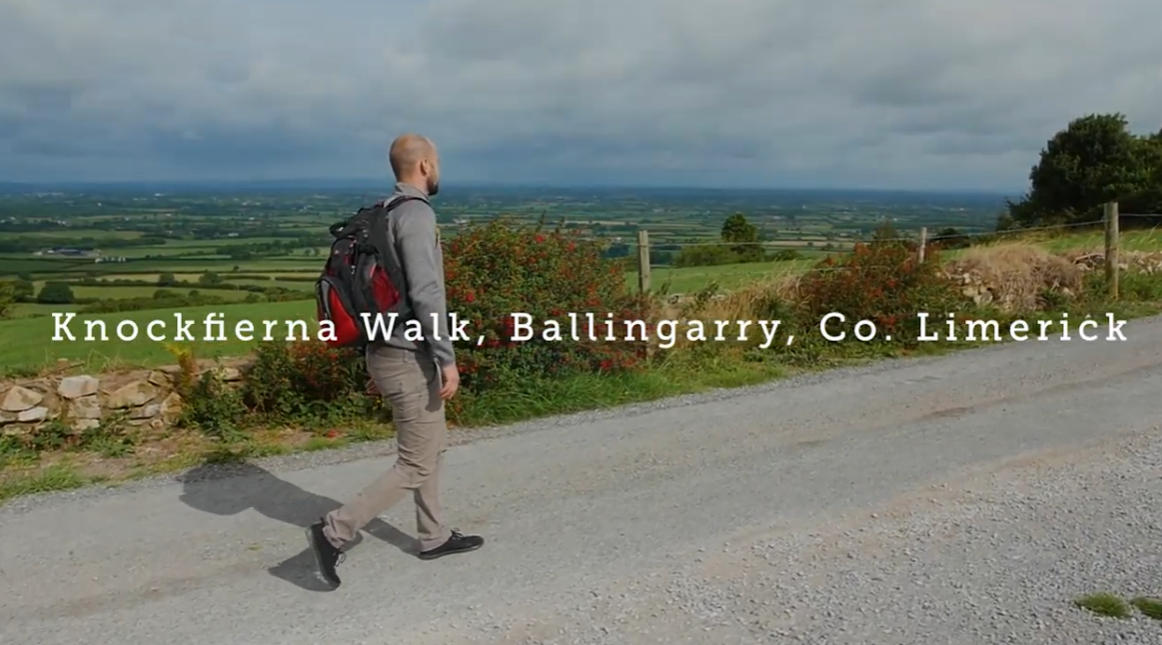
Family Group Record of
Patrick Carey and
Bridget Dwyer
Patrick Carey was born in about 1780 of Ballingarry, Limerick,
Ireland, and was most likely the son of Edward and Bridget Carey
of Ballinahaha Commons. The J. Keary (John or James?) of Ballynaha
in the Grand Jury List in 1808 may be Patrick's brother. Thomas is
of an age to be another brother, with Patrick, John, and Thomas as
the sons of Edward and Bridget Carey. Patrick married Bridget
Dwyer in about 1800.
Patrick and Bridget had the following children:
1. John, born in about 1800 of Ballingarry; married
Bridget; had son, John (b. 1841, who married Catherine Morrissey
in 1863).
2. Richard, born in about 1802 of Ballingarry; married
Johana Cullinane 30 January 1826 in Mahoonagh; had children James,
Patrick (b. 1838 in Mahoonagh); John Joseph, Michael, Edward and
Margaret; died in about 1865 in Chicago.
3. Jeffrey, born in 1807 of Ballingarry; married Mary
Gibbon, had daughters Bridget (1822) and Mary (1824); married Mary
Donohue (1827) had sons, Patrick (b. 1830) and Thomas (b. 1840);
died 26 May 1884 in Chicago. Jeffrey lived with his son, Thomas,
in Chicago at 79 Ewing St, 81 Ewing St, and was at 225 Ewing St
when he died. His obituary read "Carey, Jeffery, May 26, 1884,
father of Thomas and Patrick Carey, aged 79, native of
Ballingarry, Co. Limerick. Funeral from his son’s resid., 225
Ewing Street to Calvary." At that time, John J Carey,
Richard's son, lived at 250 Ewing St. In the 1890s, when John
Carey died at 250 Ewing St, Thomas is shown at 245 Ewing St.
4. Anna, baptized 23 September 1826, daughter of Patrick
Carey and Bridget Dwyer in Ballingarry (mother's first name not
legible in the parish register). One sponsor was ______ Keeffe.
Another possible child is Mary, who immigrated with Richard and
Jeffrey. Mary may also be Jeffrey's wife.
SOURCES: Ballingarry parish register online at nli.ie;
Mahoonagh parish register online at nli.ie; Griffith's
Valuation; Tenure Books; Land Books; House Books; Tithe
Applotment, FHL# 256569; research by Limerick Genealogy;
limerick.brsgenealogy.com;
http://home.att.net/~wexlababe/tithes_ballingarry_parish.htm:
Ballingarry, Granagh and Clouncagh, County Limerick, Archival
Records, 1800-1900, Christy Kerins; 1901 census Ballingarry,
1911 census Ballingarry; e-mail communication, Mike Burke, 2012;
Knockfierna the Hill of Truth, Knockfierna Heritage
Society.
